MARKET FOCUS
Trends and prospects

TECHNOLOGY
UPDATE
New solutions and materials
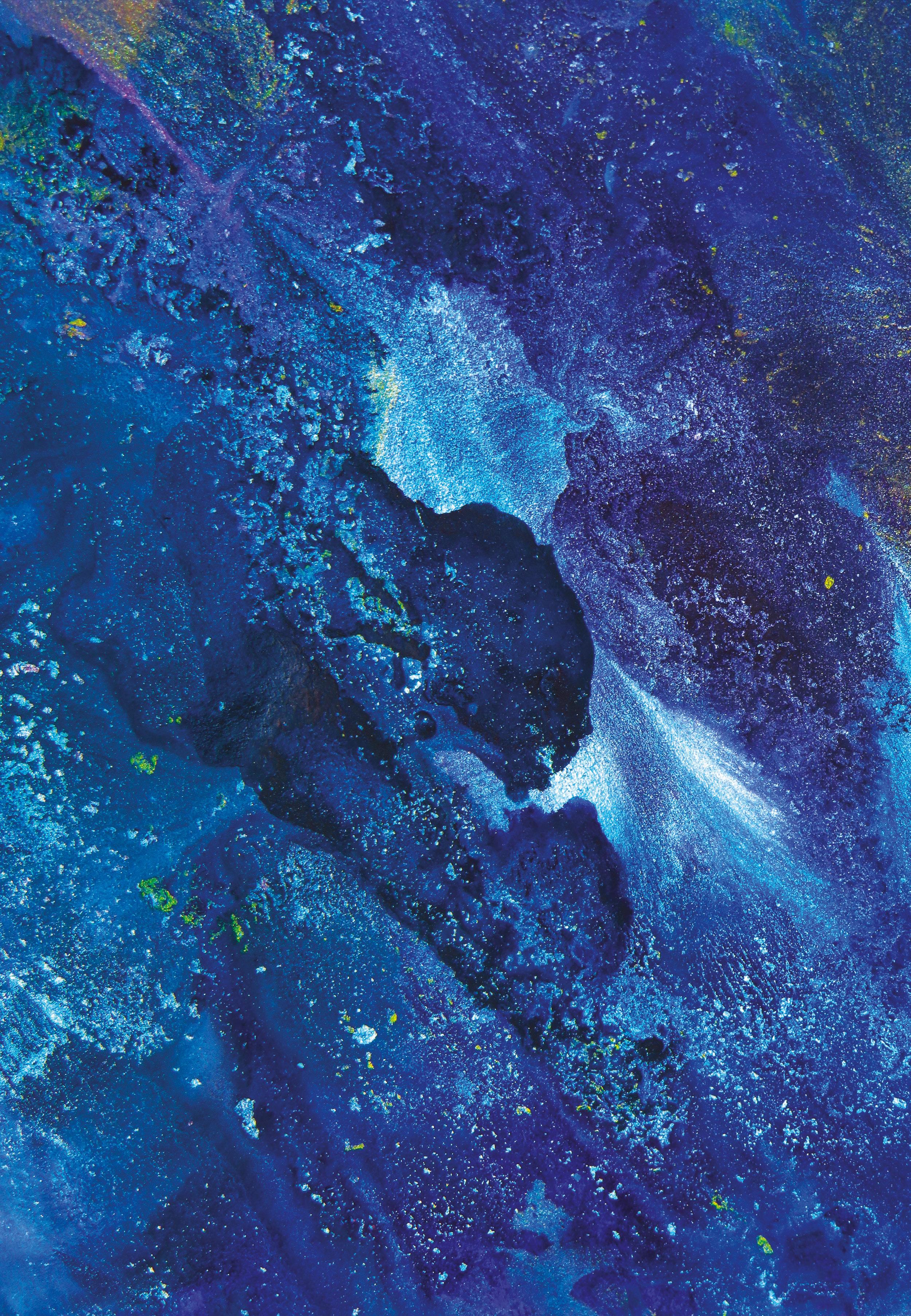
LABEL STORIES
Design and awards
Solutions for label printing and labeling
by
Soluzioni per la stampa e l’etichettatura
1•2023
11-14

SETTEMBRE 2023
BRUSSELS EXPO
Il prossimo settembre, vivete un’esperienza a tu per tu con i grandi al Labelexpo Europe 2023, la più ampia offerta di tecnologie nella storia delle etichette.
Ogni padiglione e spazio espositivo mostrerà un assaggio del futuro della stampa. Partecipate a centinaia di dimostrazioni dal vivo per vedere il funzionamento di macchinari rivoluzionari ed il lancio di prodotti innovativi ideati dai produttori leader nel settore.
Innovazione, precisione, velocità e creatività: scopritele tutte al Labelexpo Europe 2023. La fiera che definisce i nuovi standard internazionali.
9 PADIGLIONI 4 GIORNI CENTINAIA DI DIMOSTRAZIONI DAL VIVO
SCOPRITE TUTTO QUANTO C’È DI LEGGENDARIO: WWW.LABELEXPO-EUROPE.COM
FLEXIBILITY WE ENLABEL FLESSIBILITÀ
ABBRACCIARE L'IMPREVISTO CON FIDUCIA
Le sfide odierne della supply chain, dinamiche e imprevedibili, nella produzione di etichette richiedono lo stesso livello di flessibilità per soddisfare la crescente domanda di tirature più brevi, tempi di consegna ridotti e un maggior numero di varianti di prodotto.
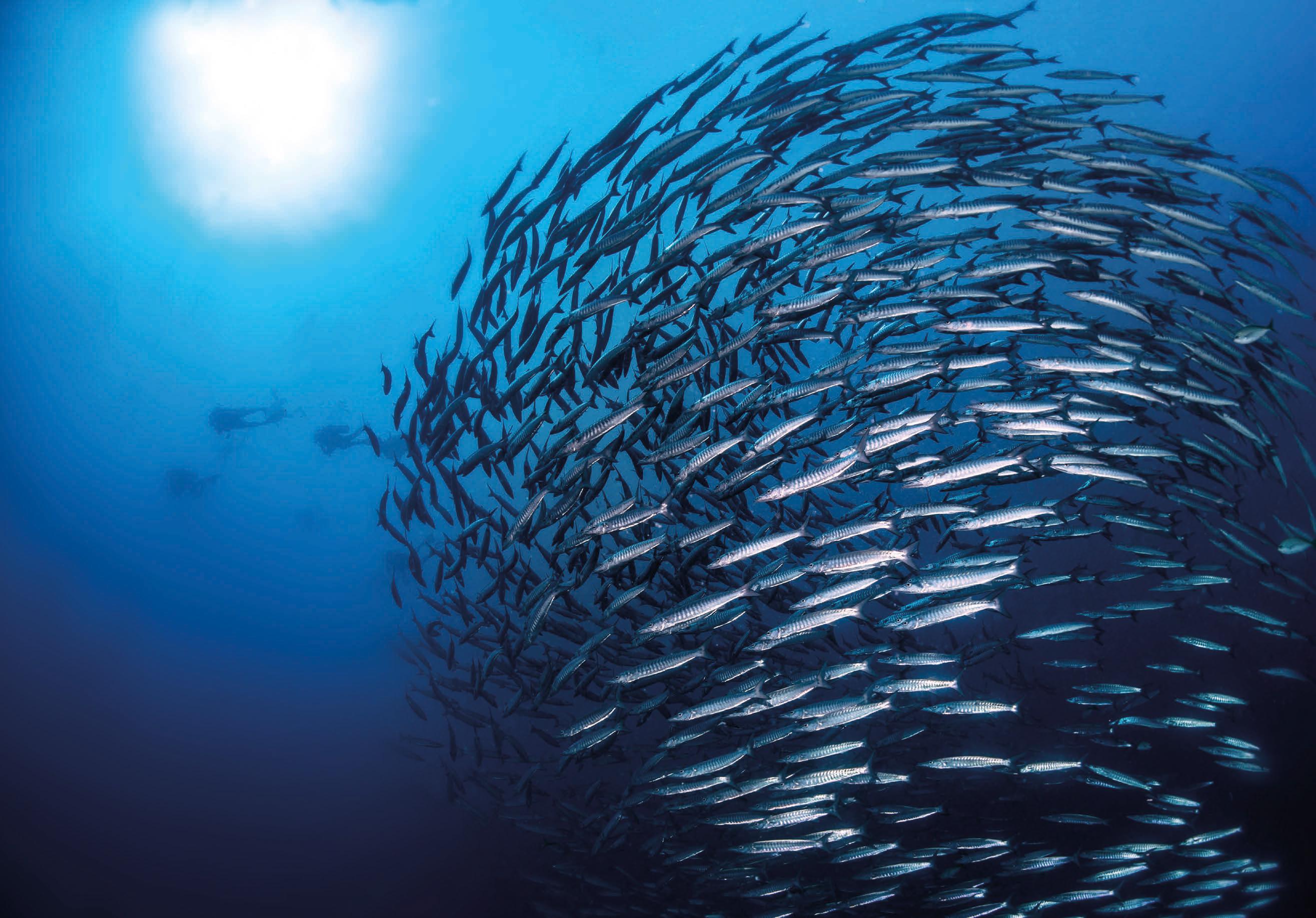
Siate pronti ad affrontare qualsiasi cosa vi si presenti. La serie LabelStream 4000, una macchina da stampa digitale a getto d’inchiostro UV su scala industriale, offre una straordinaria flessibilità grazie alla sua elevata capacità di produzione, fino a 75 m/min con una larghezza di stampa di 410 mm, sei colori (WCMYKO),

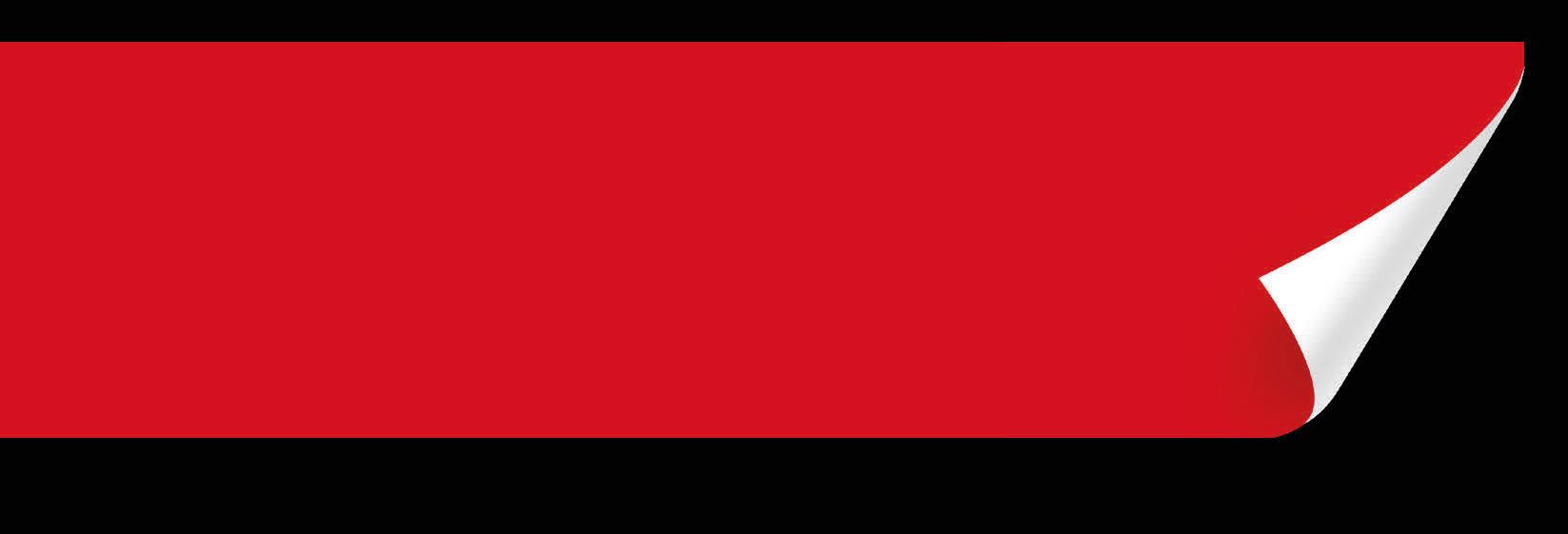
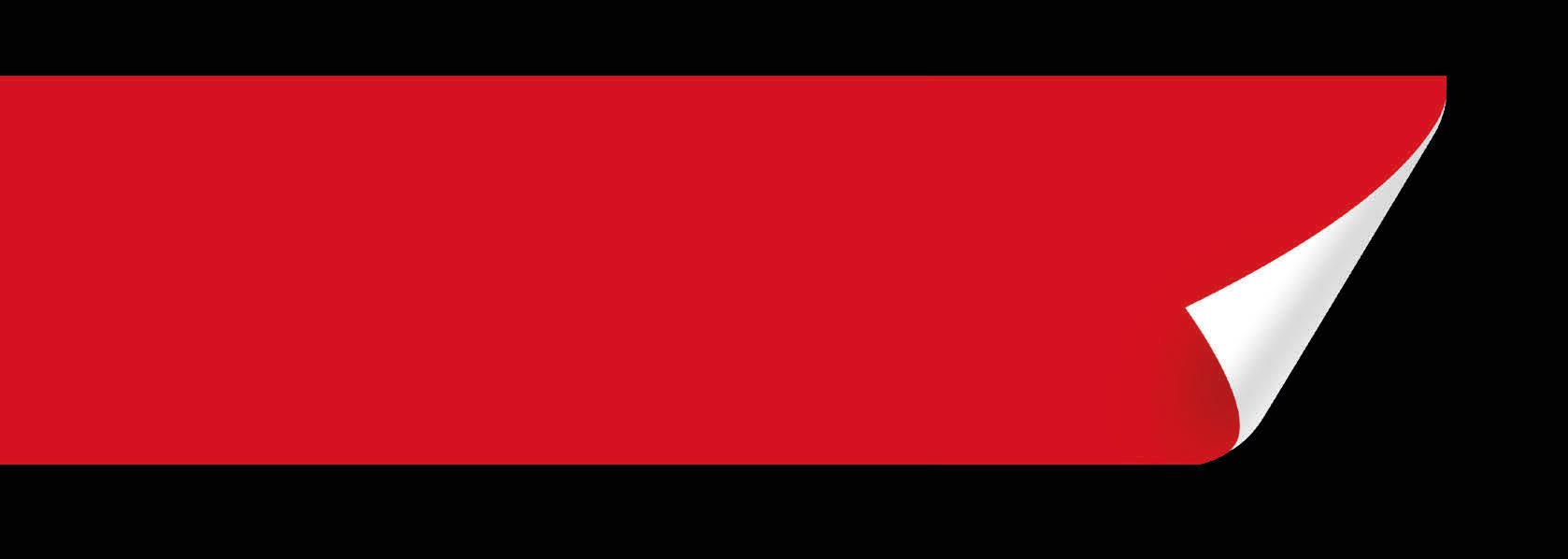
facilità d’uso e funzionalità di dati variabili. Scoprite come la LabelStream 4000, nella sua configurazione ibrida con stazioni di stampa flessografica in linea, abbellimento, fustellatura e taglio, offre un livello superiore di efficienza produttiva.
Grazie ai colori brillanti, all’opacità del bianco simile a quella dello schermo fino all’80% e alla tecnologia di stampa a getto d’inchiostro UV all’avanguardia, estendibile opzionalmente con moduli di abbellimento e finitura analogici, la possibilità di trasferire i volumi della flessografia al digitale non è mai stata così facile.
Direttore Responsabile
Stefano Legnani
Coordinamento editoriale
Chiara Riccardi chiara.riccardi@innovativepress.eu
Marketing e Vendita
Katia Pasquali katia.pasquali@innovativepress.eu

Redazione
Chiara Bezzi
Silvia Ballabio
Grafica e impaginazione
Amalia Pari
Stampa e confezione
Sprint 24
Fax
LABELWORLD è parte del NETWORK


Rassegna Grafica
Rassegna dell’imballaggio
Beverage Machines BM

Food Machines FM
Editore Innovative
Press
Aut. Trib. di Milano n. n. 60 del 07/02/2006
Iscrizione al ROC n. 35480 del 10/11/2020


Tutti i diritti sono riservati - È vietata la riproduzione anche parziale senza l’autorizzazione dell’Editore.
Informativa Privacy ai sensi del D.lgs 196/03 per il trattamento dei dati. La informiamo che, le finalità del trattamento dei dati relativi ai destinatari del presente periodico consistono nell’assicurare l’aggiornamento dell’informazione tecnica a soggetti identificati per la loro attività professionale mediante l’invio della presente rivista o di altre dello stesso editore riguardanti la medesima sfera di attività. In qualsiasi momento, Lei potrà chiedere al Titolare del Trattamento dei dati personali, Innovative Press Srl con sede in Milano, via Cino del Duca n. 5, la consultazione, la modifica, il blocco o la cancellazione dei Suoi dati secondo quanto previsto dall’art.7 della stessa normativa, scrivendo a info@innovativepress.eu
24 OMET porta la stampa sostenibile all’Innovation Park
25 OMET, sustainable printing lands at the Innovation Park


26 Fujifilm, soluzioni esclusive per il packaging
27 Fujifilm, a range of unique packaging solutions
28 Weigang WL340 REM Edition: velocità, efficienza e qualità
30 BAMA presenta al mercato Flexless 350 Servo
31 BAMA presents Flexless 350 Servo to the market
32 LED UV di GEW, la scelta vincente di etic.a
33 UV LED by GEW, the winning choice of etic.a ➣

38 A showcase of excellence in the world of labels
42 Birre ed etichette, premiate le eccellenze italiane

➣
44 European Label Forum 2023, label community ready to meet in Vienna
45 Labelexpo Europe, la stampa di etichette torna protagonista

Normativa UE 1169/2011
p p
In questo numero 9 PADIGLIONI 4 GIORNI CENTINAIA DI DIMOSTRAZIONI DAL VIVO Il prossimo settembre, vivete un’esperienza tu per tu con grandi al Labelexpo Europe 2023, la più ampia offerta di tecnologie nella storia delle etichette. macchinari rivoluzionari ed il lancio di prodotti innovativi ideati dai produttori leader nel settore. Innovazione, precisione, velocità creatività: scopritele tutte Labelexpo Solutions for label printing and labeling Soluzioni per stampa l’etichettatura by MARKET FOCUS Trends and prospects TECHNOLOGY UPDATE New solutions and materials LABEL STORIES Design and awards 2023 In copertina Photo by Pexels Redazione
S.r.l.
Innovative Press
Milano
Via Teocrito 47 - 20128
Tel. 02252071
0227000692 info@innovativepress.eu www.innovativepress.eu
Focus
➣ Market
as always
Stampa
etichette, uno sguardo nel futuro
4 Label printing market, as vibrant
5
di
a dynamic market
Etichette sleeve, un mercato sempre dinamico
Labels & Sustainability
Bioplastics in packaging 10 Sustainability, the challenge of the supply chain
Label Design 12 Il neuromarketing incontra l’arte dell’etichetta 14 Neuromarketing meets the art of labeling ➣ Tech Update 16 USELY by All4Labels, the sustainable rigid label for wet wipes packaging 17 USELY, l’etichetta rigida sostenibile per le salviette umidificate 18 Canon, a combination of consistency and quality 19 Canon, una combinazione di coerenza e qualità 20 Gallus, nuova vision sul futuro della stampa di etichette 21 Gallus, new vision on the future of label printing 22 Pubbliservice punta su Durst, servizio professionale in tempi contenuti 23 Pubbliservice relies on Durst, professional service in very short time
6 Sleeve label,
7
➣
8
➣
Label Story
Events
In the issue... 4 38





LABELWORLD | 3 | 2023 ALL YOU NEED IS RSC durst-group.com/label TAU RSCi INNOVA IL TUO BUSINESS DELL‘ETICHETTE REACH & SVHC COMPLIANT HEAVY METAL & VOC FREE BS5609 SECTION 3 COMPLIANT Upgradabile in larghezza di stampa 330/420/510 mm Svolgitori Jumbo Produttività Flexo Prezzi inchiostro competittivi Consumi ink contenuti Qualità di stampa 1200 x 1200 dpi @ 2 p cl Copre il 95% dei colori pantone IL MIGLIORE DELLA CLASSE VANTAGGIO COMPETITIVO MODULARITÀ
Label printing market as vibrant as always
The label printing industry is a dynamic market. In the last years label converters felt the need for automation at various product life cycle stages. Digital printing is becoming a player technology in the production processes.
The print label market is expected to grow at a CAGR of 4.2% over the forecast period 2023 –2027.WithagrowingnumberofSKUs, a reduction in average job lengths and life cycles for mass-produced products, and an increase in the regulatory content on the label, there is an increasing demand for more attractive brands from print label customers. Moreover, increasing demand for manufactured goods and an upsurge in the disposable income of people are also expected to drive the print label market during the forecast period. Many digital printing system suppliers believe that digitally printed labels are suited to meet the market’s demands and have an added advantage over traditional printing technologies. Digital technology has met the multiple requirements of various end-user

industries in making attractive label designs to encourage potential consumerstomakepurchases.Integrating digitaltechnologywiththeexistinglabel printing technique is expected to bring a huge change to all the small-scale and large-scale sectors, improving the overall market. However, environmental regulations for labeling hinder the growth of the print label market. Label application problems are caused mainly by environmental conditions, namely temperature and humidity. Applying the labels only in dry, room-temperature states can be preserved them. However, avoiding extreme temperatures or moisture is sometimes possible in winter, summer, and cold warehouses. The stable demand during the initial recovery from the pandemic created immense pressure on the labeling companies’ production capacity, highlighting the
need for automation at various product life cycle stages.
The value of labels
Print labels are the primary source of communication between a company and its customers. Labels contribute majorly to how a consumer perceives a product while looking at a product label and how much impact it makes on the consumer’s mind. The food industry is expected to account for a significant print label market during the forecast period. Consumers are now more aware of the content of the food they consume. There has been more emphasis on the materials of the products displayed on the label, due to which manufacturers are opting for more prominent brands. Moreover, the growing demand for packaged food is also influencing the growth of this market as it ensures food quality, safety, and long shelf life. According to Label Insight and the Food Marketing Institute, 86% of shoppers have transparency on their minds when grocery shopping and would feel a higher sense of trust for food manufacturers and retailers that provide complete, easy-to-understand ingredient information.Thegrowthofthee-commerce industry in the region is one of the significant factors that is expected to fuel the adoption of print labels over the forecast period.
To download the report www.mordorintelligence.com
LabeLworld | 4 | 2023 Market Focus
Stampa di etichette uno sguardo nel futuro
L’industria della stampa di etichette è un mercato dinamico. Negli ultimi anni i trasformatori di etichette hanno sentito la necessità di automatizzare le varie fasi del processo produttivo. La stampa digitale sta diventando una tecnologia protagonista in produzione.

Ilmercato delle etichette stampate dovrebbe crescere a un CAGR del 4,2% nel periodo dal 2023 al 2027. Con un numero crescente di codici SKU, una riduzione della durata media dei lavori e dei cicli di vita per i prodotti realizzati in serie e un aumento del contenuto normativo sull’etichetta, c’è una crescente domanda di brand più attraenti da parte dei clienti di etichette stampate. Inoltre, si prevede che anche l’aumento della domanda di manufatti corrisponda ad una crescita del reddito disponibile per coloro guideranno il mercato delle etichette stampate durante il periodo di previsione.
Molti fornitori di sistemi di stampa digitale ritengono che le etichette stampate digitalmente siano adatte a soddisfare le richieste del mercato attuale e presentino un ulteriore vantaggio rispetto alle tecnologie di stampa tradizionali. La tecnologia digitale ha soddisfatto i molteplici requisiti di vari settori degli utenti finali nella realizzazione di design di etichette attraenti per incoraggiare i potenziali consumatori a effettuare acquisti. Si prevede che l’integrazione della tecnologia digitale con la tecnica di stampa di etichette tradizionale porterà un enorme cambiamento in tutti i settori su piccola e grande scala, migliorando il mercato in generale. Tuttavia, le normative ambientali per l’etichettatura ostacolano la crescita del mercato delle etichette stampate. I problemi di applicazione delle etichette sono causati principalmente dalle condizioni ambientali, in particolare temperatura e umidità. L’applicazione delle etichette può essere preservata solo in condizioni asciutte e a temperatura ambiente. Tuttavia, a volte è possibile evitare temperature estreme o umidità in inverno, estate e magazzini freddi. La domanda stabile durante la ripresa iniziale dalla pandemia ha creato un’enorme pressione sulla capacità produttiva delle aziende di etichettatura, evidenziando la necessità di automazione nelle varie fasi del ciclo di vita del prodotto.
Il valore delle etichette
Le etichette stampate sono la principale fonte di comunicazione tra un’azienda e i suoi clienti. Le etichette contribuiscono principalmente al modo in cui
un consumatore percepisce un prodotto mentre guarda l’etichetta di un prodotto e all’impatto che ha sulla mente del consumatore. Si prevede che l’industria alimentare rappresenterà un mercato significativo delle etichette stampate durante il periodo di previsione. I consumatori sono ora più consapevoli del contenuto degli alimenti che consumano. C’è stata maggiore enfasi sui materiali degli ingredienti visualizzati sull’etichetta, per cui i produttori stanno optando per marchi più importanti. Inoltre, anche la crescente domanda di alimenti confezionati sta influenzando la crescita di questo mercato in quanto garantisce qualità, sicurezza e lunga durata degli alimenti. Secondo Label Insight e il Food Marketing Institute, l’86% degli acquirenti ha in mente la trasparenza quando fa la spesa e proverebbe un maggiore senso di fiducia per i produttori e i rivenditori di alimenti che forniscono informazioni sugli ingredienti complete e di facile comprensione. La crescita del settore dell’e-commerce è un altro dei fattori significativi che dovrebbe alimentare l’adozione di etichette stampate. Per scaricare il rapporto www.mordorintelligence.com
Global Print label Market LabeLworld | 5 | 2023
Print Label Market 2023 Source: Mordor Intelligence 2028 CAGR 4,2%
Sleeve label a dynamic market
The shrink and stretch sleeve market was valued at USD 10.37 billion in 2020 and is expected to grow to USD 15.55 billion by 2026, with a CAGR of 6.52% over the period 2021 - 2026.
In the last couple of decades, the labeling and packaging industry has experienced extensive product innovation. Sleeve label is one of those innovative products that has continually gained traction in the packaging landscape. Sleeve labels are colorful wraparounds around containers creating a greater aesthetic appeal. These are basically of two types - Shrink Sleeve Labels and Stretch Sleeve Labels. Shrink Sleeve Labels Market are extremely popular in the market and has been readily accepted by the packaging industry. Shrink Sleeve Labels Market easily adapt to the shape of the container giving it higher product visibility and consumer appeal.
Stretch sleeve labeling is ready-to-use and can easily conform to containers of different shapes. In addition to the characteristics of providing a greater aesthetic appeal, it is eco-friendly. Stretch labels come with zero adhesiveness or heat and rely only on their elasticity to hold the container’s shape. Shrink sleeve labels are an ideal fit for container package labeling, where the product is generally packed at higher throughput rates of up to 800 containers per minute.
Manufacturers in the process of prioritizing consumer expectations and constructing better end-user engagement focus on the advanced labeling of their products to maintain a competitive advantage.
Stretch and shrink sleeve labels are polyester or plastic labels that wrap the entire perimeter of a product and conformtotheuniquegeometryofany package. Stretch labels are made of LDPE and are highly elastic and hence can be pulled over the product container. Shrink sleeves are applied in loose form and conform to the product when exposed to heat by channeling the product through a heat tunnel.
Trend of a competitive market Demand to increase on-shelf appeal of various products is expected to drive growth. Sleeve labels have the advantage in making a product stand out to consumers. Stretch and shrink sleeve labels have enhanced the versatility of conveying brand and safety messaging for packaging designers and brand owners. A sleeve label is applied to a package in multiple ways, from covering just the shoulders or the cap of a container to full-body, 360-degree coverage. Extra coverage provided by full-body shrink sleeves ensures space for colorful and eye-catching designs. Full-body sleeves equip product and brand owners with more space to communicate with both current and prospective customers. With tight labeling regulations for both food and pharmaceuticalproductsinplaceoron theway,havingextraspacetoconform to regulatory standards while maintaining a product’s ability to reach out to consumers is expected to heighten the
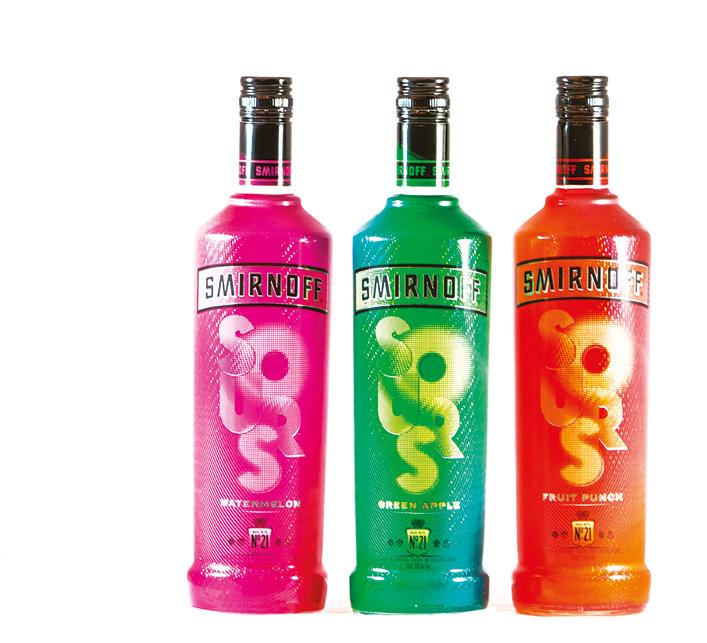
importance of sleeve labels. Further, Shrink Sleeves provide better flexibility to manufacturers to use their shape to enhance marketing appeal. They allow product-makers to utilize a single colorless container and differentiate products and lines with their labels. The movement to single-serve, smaller doses, and smaller containers is expected to drive the use of shrink sleeve as convenient as a way to get more content across smaller surface areas. The Competitive Landscape for the Shrink and Stretch Sleeve Labels Market is highly fragmented with several smallandmedium-sizedplayersacross geographies. The heightened need for customization leads to the proliferation of smaller players that cater to the customization needs of a handful of consumers.
Asia Pacific, the Fastest Growing Market
The Asia-Pacific region has emerged as a significant shrink sleeve & stretch sleeve labels market, primarily driven by India and China’s emerging economies. The major driving forces in the Asia-Pacific region include rising urbanized populations, increasing demand for packaged food, easy availability of polymer films, and relatively low labor cast. Moreover, the easy availability of polymer films and low labor cost is further boosting the market growth.
Source: Mordor Intelligence
LabeLworld | 6 | 2023 Market Focus
Etichette sleeve un mercato sempre dinamico
Il mercato delle sleeve shrink e stretch è stato valutato per 10,37 miliardi di dollari nel 2020 e ci si aspetta una crescita che raggiungerà i 15,55 miliardi entro il 2026, con un CAGR del 6.52% rispetto al periodo 2021-2026.
Negli ultimi due decenni, l’industria delle etichette e dell’imballaggio ha sperimentato una grande innovazione di prodotto. L’etichetta sleeve è una di quelle soluzioni innovative che sono sempre più diffuse nel panorama degli imballaggi. Le etichette sleeve sono colorate e avvolgono i contenitori creando un accattivante effetto estetico. Le sleeve si distinguono fondamentalmente in due categorie: etichette shrink ed etichette stretch. Le shrink è estremamente popolari sul mercato e sono ampiamente usate nell’industria dell’imballaggio. Le etichette shrink si adattano facilmente alla forma del contenitore, aumentando così la visibilità del prodotto e l’attrattiva nei confronti del consumatore. L’etichetta stretch, invece, è pronta per l’uso e può adattarsi facilmente a contenitori di forme diverse. Oltre alle caratteristiche estetiche, l’etichetta stretch è apprezzata perché è ecologica. Infatti, questa tipologia di etichette è priva di adesivo o calore e si basa solo sull’elasticità per mantenere la forma del contenitore. Le etichette shrink sono ideali per l’etichettatura di packaging in cui il prodotto viene generalmente confezionato a velocità elevata (fino a 800 contenitori al minuto). Le etichette stretch e shrink sono realizzate in poliestere o plastica e avvolgono l’intero perimetro di un prodotto, adattandosi alla geometria unica di qualsiasi confezione.
Trend di un mercato competitivo
Si prevede che la ricerca di prodotti sempre più accattivanti sullo scaffale guiderà la crescita del settore delle etichette. Le sleeve hanno il vantaggio di mettere in risalto il prodotto agli occhi dei consumatori. Le etichette stretch e shrink hanno ampliato le possibilità per i designer di imballaggi e brand owner di comunicare il proprio messaggio, garantendo sempre gli standard di sicurezza. L’etichetta viene applicata a ogni confezione in diversi modi, fino a coprire il prodotto a 360°. La copertura extra fornita dalle etichette sleeve su tutto il corpo del prodotto garantisce lo spazio necessario per design colorati e accattivanti. Le sleeve a corpo
intero offrono ai brand owner più spazio per comunicare con i clienti attuali e potenziali. Con rigide normative sull’etichettatura sia per i prodotti alimentari che per i prodotti farmaceutici già in atto o in arrivo, si prevede che disporre di spazio aggiuntivo per conformarsi agli standard normativi mantenendo la capacità di un prodotto di catturare lo sguardo dei consumatori aumenterà l’importanza delle etichette sleeve. Inoltre, le shrink offrono una maggiore flessibilità ai produttori che possono utilizzare la forma del packaging per migliorare l’attrattiva del marketing. Inoltre, consentono ai produttori di utilizzare un unico contenitore incolore e differenziare prodotti e linee con le loro etichette. Con il passaggio a monoporzioni e contenitori più piccoli, le sleeve saranno ideali per raggruppare più contenuti su superfici più piccole. Il panorama competitivo per il mercato delle etichette shrink e stretch è altamente frammentato, con diversi attori di piccole e medie dimensioni in tutte le aree geografiche. L’accresciuta necessità di personalizzazione porta alla proliferazione di attori più piccoli che soddisfano le esigenze di customizzazione di tutti i consumatori.
Asia-Pacifico, mercato in forte crescita
La regione dell’Asia-Pacifico è emersa come un importante mercato per le etichette sleeve shrink e stretch, trainato principalmente dalle economie emergenti di India e Cina. Le principali forze trainanti nella regione dell’Asia-Pacifico includono l’aumento della popolazione urbanizzata e la crescente domanda di alimenti confezionati. Inoltre, la facile disponibilità di film polimerici e il basso costo della manodopera stanno ulteriormente stimolando la crescita del mercato.

Global Print label Market LabeLworld | 7 | 2023
Regional Growth Rates High Mid Low
Mordor Intelligence
Shrink and Strech Labels Market Growth Rate Geography (2020-2025)
Source:
2023
Crescita del mercato delle Sleeve
Source: Mordor Intelligence 2028 CAGR 6,52%
Bioplastics in packaging

Plastics are used en masse in packaging, but they are said to be harmful to the environment. Bioplastics already are a possible alternative to conventional fossil plastics, or constitute a sensible addition. As production increases on an industrial scale, the materials should become interesting for mid-sized and small companies and also achieve a positive impact on the carbon footprint.
Plastics have become a fundamental part of the packaging world. There is abroadspectrumofapplications for polymers. In addition, they have a low weight, long shelf-life and canalsobeusedinsensitiveapplication areas like the food or pharmaceutical industry. Therefore it comes as no surprise that plastics are used en masse inpackaging.Accordingtoinformation by the German association IK - IndustrievereinigungKunststoffverpackungen e.V., in 2021 in Germany alone, more than four million tons of plastic were produced for packaging – whether for wraps,bottles,closures,bagsorpallets. This means that production increased by1.5%comparedtothepreviousyear. Butthisblessingalsohasadarkerside. Plastics,andthisalsoappliestopackagingmadethereof,aresaidtobeharmful to the environment. On the one hand, the industry has made lots of progress regarding recycling and circular economy. On the other, there is one factor thatremainsunchangeable,regardless of reusability: new plastics are usually made from oil, and therefore from a finite resource.
• What exactly are bioplastics?
However, most products definitely
need packaging. One way to escape this dilemma is the use of so-called bioplastics. According to definition by the European Bioplastics association, a raw material is considered bioplastic if it is either biobased – that is, consists in part or as a whole of sustainable raw materials – or biodegradable – that is, able to be reduced to its components by microorganisms under certain circumstances. In the best case, bioplastics fulfil both criteria.
Almost all bioplastics currently produced are biobased. There are nevertheless fossil plastics which are biodegradable, and many universities and research centres are studying bacteria which might be able to decompose fossil plastics. But right now their proportion is still insignificant. Therefore, as a rule, bioplastics are for the greatest part produced from sustainable raw materials. Compared tofossilrawmaterials,thisisalreadyan advantage. Further, bioplastics can alreadybeproducedinpartfromalready used organic material, which further improves their environmental impact from cultivation. This is called multiple sequential use.
• What can bioplastics do?
Regarding applications, bioplastics are just as versatile as their fossil coun-
terparts. Because common plastics like polyethylene (PE), polypropylene (PP) or polyethylene terephthalate (PET) can for example also be gained from sugar cane or from bio masses that are created during the production of plant oil. It is true that plastics are still partially produced from both fossil and biobased polymers, but that can change as well in the future. The industry is confident in any case. Only in December 2022, European Bioplastics announced that production capacity in the EU will rise from about 2.23 million tons in 2022 to about 6.3 mio tons in 2027, so roughly triple. The main driving force behind this development is the packaging industry. The reason being that a good 48% of all bioplastics produced in the EU – one milliontons,noless–wereintendedfor packaging production in 2022. This includes the use of bioplastics in sensitive areas like food packaging. Japanese company Futamura, for example, produces and distributes the bioplastic wrap NatureFlex. This is made of FSC and PEFC certified wood pulp and has similar properties toPETorPPwrap.Thetrick:according to the manufacturer, NatureFlex can be decomposed in home composting, and not just under conditions found in industry.

Labels&Sustainability
ThematerialisusedforexampleinGermansupermarkets.
Already since the beginning of 2022 the discount chain Norma has been distributing their own chocolate brand “ExcelsiorMagieduChocolatPremium”inbioplasticwrap. BritishdrinkingchocolatemanufacturerCocoaCanopyhas also been using NatureFlex for their products since 2022.
• What are the considerations?

At a first glance, nothing has changed for consumers, they only have to change their habits of disposing of the wrap. The reason is that NatureFlex wraps, like most biobased wraps, should not enter the raw material circulation for recyclable, fossil plastics, but be added to the compost or the residual waste, in case they are not compostable. The processing companies have the responsibility to alert their customers through information on the packaging. Another challenge that companies face when using bioplastics is their ability to be processed. The new raw materials might have similar properties to fossil plastics, but:Thisdoesnotmeantheycanjustbefedintothesame machines. For example, Cocoa Canopy worked closely together both with Futamura and mechanical engineering company BW Flexibles. CEO Nav Notay: “Futamura has contributed a lot to our success. Especially regarding the right bag packaging machines, we have received support and found the perfect solution with the engineers.”

• What does the future hold?
One current favourite within the sector is the bioplastic polyethylene furanoate (PEF). The material is gained from plant sugar – usually from corn, wheat or sugar beets –and displays similar properties to PET. Dutch company Avantium produces PEF for use in bottles for beverages. According to the nova institute PEF has superior barrier properties, is mechanically and chemically recyclable and can also be recycled within the possibilities of established PET recycling. PEF has a 12 °C higher resistance to heat compared to PET and greater stability. This makes the development of light packaging material made from PET possible with less use of resources. Avantium has already usedthisplantbasedpackagingmaterialinapilotrun,and in autumn 2022 has started building a plant for furandicarboxylic acid with a capacity of 5,000 tons per year in Delfzijl in the Netherlands.
In many applications, bioplastics therefore already are a possible alternative to conventional fossil plastics, or constitute a sensible addition. As production increases on an industrial scale, the materials should become interesting for mid-sized and small companies, too, and also achieve a positive impact on the carbon footprint.
Source: Tightly Packed Magazine www.interpack.com
Sustainability the challenge of the supply chain

Sustainability is key to the packaging and label industry, and it is focusing on sustainability’s three Rs: Reduce, Reuse and Recycle. There’s an enormous opportunity across the label industry to reduce waste, reuse containers and recycle the materials used for production.
Consumer behaviour has ondergone numerous changes. Some of them will stay, others will leave aftersometime.Butthosethatwillstay forever are the ones we have to take special care of and it is our obligation as iIndustry leaders to provide an appropriate answer. It is relevant how our industryhaschangeditsroleinthelast years, moving from a relatively passive attitudetoamuchmoreactiveone,anticipating and acting accordingly. Connecting with label users has becomeextremelyrelevant.Thedemand is irregular and less predictable and, at thesametime,thereisaneedtobetter match this demand with the printing capacity.ThelatestFINATRADAR#16 showed that 76% of brand owners are planningtobuymorevolumefor2022. Labelconvertersalreadydemonstrated howflexibleandfastadapterstheywere at the beginning of the pandemic. The more demanding situation facing labelconverterswillalsorequestamore talentedandspecializedworkforce,not onlyprinters.Inthisrespect,labelconverterswillhavetoaddanextraparameter: sustainability. The design of the productwillnotonlytakeintoconsiderationthegraphicdesign,quality,service delivered,leadtimes,etc.Gettingthese
new talented people into our industry is also a challenge the label industry must face.
The importance of recycling
Themostrelevantchallengeismatching the demand and the offer. The label Industry was hit by a serious lack of self-adhesive material. After having solvedthisbigrestriction,labelconvertersshouldwonderwhatcantheydoto avoidorminimizethisriskgoingforward. Canrecyclingorre-usebeapartialsolution to it? Why should they throw away materialthatcouldbebroughtbackinto our supply chain? Can this help make more material available even at a faster paceratherthangoingbackupstream?
CELAB was born to answer the question of what our Industry can do with the matrix and release liner. We want to promote the recycling of those materials and provide a valid solution. The self-adhesiveIndustryhasalwaysbeen identifiedasaveryflexibleandproactive business and this topic is a challenge we must provide a solution to. CELAB is leading this challenge.
Facts, not only words
Looking at the data from the latest FINAT Radar published last December, thesituationappearclear.Totheques-
tionofhowimportantitisthatlabelvendors have environmental certification, 93%oftherespondingcustomerssaid it is becoming more important or even vital.Thisisahugeincrementfromthe previousFINATRadar,whichwas75%. On top of that, not a single company selectedtheresponsethathavingsome type of participation is not important. What are their actual recycling practices? Only 10% of the respondents said they are not involved in a programme and have no plans. This means that 90% are already recycling some or all of the material. This shows the level of consciousness of label users. But the labelindustrymustalsoberealisticand accept there is a huge task in front of us. And don´t think only from a technical point of view, also communication is something this industry has to improve. 28% of the label users asked didn´t know what happens to the liner. And how many of them know there is a specific programme to recycle the liner? Sustainability is one of FINAT’s six strategic pillars, and the association is leading the industry in finding economically viable recycling solutions for secondarymaterials,limitingtheamount of raw materials used, and improving the recyclability of products.
Source: FINAT
LabeLworld | 10 | 2023 Labels&Sustainability
Analogica. Digitale. Sostenibile.
Le nostre esclusive soluzioni di stampa analogiche e digitali migliorano le prestazioni della tua produzione esistente, ti aiutano a passare al digitale e migliorano la tua sostenibilità.


Con la forza e la varietà per supportare la tua azienda nel lungo termine, sei sicuro di poter contare su Fujifilm.
Il tuo partner per la stampa di imballaggi
Il neuromarketing incontra l’arte dell’etichetta
Sappiamo che l’etichetta del vino ha un ruolo fondamentale nel processo decisionale del consumatore: a parità di prezzo e brand, è l’etichetta più gradita ad essere scelta. Per approfondire questa tematica UPM Raflatac ha commissionato una ricerca di neuromarketing.




Quali sono gli elementi di un’etichetta capaci di esprimere visivamente e sintetizzare l’essenza di un vino? Come carte e nobilitazioni possono influenzare il comportamento di acquisto? Quali sono gli elementi che catturano l’attenzione del consumatore e creano l’aspettativa di un vino pregiato attraverso vista e tatto? Sappiamo che l’etichetta del vino ha un ruolo fondamentale nel processo decisionale. A parità di prezzo e brand è l’etichetta più gradita e in grado di creare aspettative positive sul prodotto ad essere scelta. Per approfondire il ruolo di questo strumento comunicativo nell’acquisto del vino, UPM Raflatac,
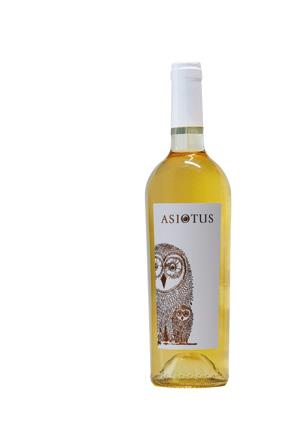
leader nell’etichettatura sostenibile, ha commissionato una ricerca di neuromarketing alla società di ricerca e consulenza SenseCatch, in partnership con Argea, il più grande gruppo vinicolo italiano, Kurz leader mondiale nella produzione di tecnologie per la stampa a caldo e a freddo, e Krämer Druck uno dei principali stampatori tedeschi nel settore delle etichette per vini. Lo studio è stato condotto in Germania, mercato interessante per gli esportatori di vino. A un gruppo di consumatori tedeschi sono state mostrate a scaffale 32 etichette, dal medesimo design ma differenti tra loro per tipologia di carta e nobilitazione.
La metodologia della ricerca
Al fine di escludere fattori esterni e variabili non di interesse per lo studio che avrebbero potuto influenzare il giudizio dei partecipanti, non sono state
inserite sull’etichetta informazioni quali annata e prezzo. Allo stesso modo, non è stata indicata la provenienza del vino e tutte le etichette sono state apposte su bottiglie della stessa forma e colore (bordolese tronco conica trasparente) con la medesima capsula neutra. È stato ricostruito l’intero customer journey, dall’osservazione dello scaffale e scelta del vino all’assaggio del prodotto. Dopo la scelta, i partecipanti potevano osservare, toccare e valutare le bottiglie una alla volta. Durante l’intero processo decisionale, dalla scelta a scaffale della bottiglia fino al momento della degustazione, è stata analizzata l’esperienza dei consumatori con la metodologia di neuromarketing, raccogliendo dati comportamentali e relativi alla reazione spontanea ai prodotti, come l’attenzione visiva e il coinvolgimento emotivo.
Catturare lo sguardo
Nel primo “momento della verità”, di fronte allo scaffale, i risultati hanno evidenziato che durante la scelta nei primi cinque secondi di osservazione, le bottiglie che hanno attirato maggiormente l’attenzione dei consumatori erano quelle caratterizzate da un contrasto visivo, cromatico o di accostamento dei materiali, come quelle con carta scura e nobilitazione metallizzata e brillante. Considerando l’intero tempo di scelta a scaffale, le etichette più osservate sono invece quelle caratterizzate da carta chiara con nobilitazioni color oro o bronzo. Inoltre, l’attenzione dei
LabeLworld | 12 | 2023 Label Design
Primi 5 secondi di fronte allo scaffale. A sinistra: attenzione visiva. In rosso le aree maggiormente osservate. A destra: bottiglie che hanno catturato maggiormente l’attenzione.
consumatori si è focalizzata su bottiglie vestite con carte ruvide e materiche, con una texture evidente alla vista e nobilitazioni in rilievo con effetto lucido, che creano un’aspettativa anche solo guardandole.

Offrire un’esperienza tattile
Durante il secondo “momento della verità”, ossia quando il consumatore interagiva fisicamente con le bottiglie, le etichette con carte materiche e nobilitazione del medesimo colore ma in rilievo valorizzavano le nobilitazioni stesse ed erano considerate interessanti e misteriose, stimolando l’“immaginazione tattile” che anticipa l’esperienza di interazione. La carta più spessa e goffrata e il rilievo rendevano maggiormente visibili le scritte e valorizzavano il disegno, modificando la percezione da un’etichetta vuota e poco curata - in caso di nobilitazione dello stesso colore della carta, priva di rilievo - a un’etichetta invece curata e intrigante, migliorando le aspettative sul prodotto. In questo caso infatti, i consumatori immaginavano un vino di maggiore qualità, un prodotto premium. Il tatto ha riconfermato il proprio ruolo rilevante nella scelta. Infatti, i consumatori si orientavano molto verso le bottiglie la cui etichetta richiamava un’esperienza tattile e, se toccandola l’esperienza era gradevole, questo aumentava l’intenzione di scegliere la bottiglia. Inoltre, il coinvolgimento emotivo era più elevato durante l’interazione tattile con bottiglie dalla superficie con effetto materico o vellutato, rispetto a quelle con carta liscia e sottile.
L’etichetta influenza anche il gusto
I risultati hanno mostrato infine che la combinazione di carta e nobilitazione, influenzando le aspettative, ha un effetto anche su gradimento e gusto percepito del vino. Il medesimo vino servito dalla bottiglia con l’etichetta più apprezzata otteneva un giudizio superiore rispetto a quando era servito dalla bottiglia con l’etichetta meno apprezzata. L’effetto si verificava anche ad un livello inconsapevole, infatti, il coinvolgimento emotivo misurato attraverso i parametri psicofisiologici è risultato superiore (+13%) in caso di assaggio del vino servito dalla bottiglia con l’etichetta preferita. Oltre al gradimento, l’etichetta ha influenzato anche il gusto percepito, poiché le persone prestavano maggiore attenzione alle caratteristiche del vino che si aspettavano di sentire, sulle quali quindi si concentravano (attenzione selettiva) percependole maggiormente.

PER MAGGIORI DETTAGLI inquadra il QR code e prenota una copia del libro
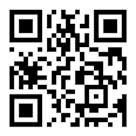
“Il neuromarketing incontra l’arte dell’etichetta.
Come carte e nobilitazioni influenzano la percezione del vino”

Neuromarketing meets the art of labeling
We know that the wine label plays a key role in decision-making. To explore the role of this communicative tool in wine purchasing, UPM Raflatac commissioned neuromarketing research.
Howpapersandembellishmentsinfluencetheperception of a wine? What elements of a label can visually express and summarize the essence of a wine? We know that for the same price and brand, it is the label that is most liked and able to create positive expectations about the product that is chosen. To explore the role of this communicative tool in wine purchasing, UPM Raflatac, leader in sustainable labeling, commisioned neuromarketing research from research and consulting firm SenseCatch, in partnership with Argea, the largest Italian group in terms of size, export capacity and productiontechnology,Kurzworld’sleadingmanufacturerof hot stamping and cold stamping technology and Krämer Druck one of Germany’s leading printers in the sector of wine labels. The study was conducted in Germany, an attractive market for wine exporters. A group of German consumers was shown 32 labels on the shelf, with the same design but different from each other in terms of paper type and refinishing. To exclude external factors and variables not of interest to the study that could have influenced the participants’ judgment, no informationsuchasvintageandpricewas included on the label. Similarly, the origin of the wine was not indicated, and all labels were placed on bottles of the same shape and color (truncated bordelaise transparent conical) with the same neutral capsule. The entire customer journey wasreconstructed,fromshelfobservation and wine choice to product tasting. After choice,participantscouldobserve,touch, and evaluate the bottles one at a time. Finally, they were made to taste the same wine, served from bottles with different labels. Throughout the entire decision-making process, from the shelf choice of the bottle to the moment of tasting, consumers’ experience was analyzed using neuromarketing methodology, collecting behavioural and related data on spontaneous reactions to products, such as visual attention and emotional involvement.
Catch the eye
In the first “moment of truth,” in front of the shelf, the results showed that during the choice in the first five seconds of observation, the bottles that attracted consumers’ attention the most were those characterized by

visual, color, or material juxtaposition contrast, such as those with dark paper and shiny, metallic ennoblement. On the other hand, considering the entire shelf time of choice, the most observed labels were those characterized by light-colored paper with gold or bronze ennoblements. In addition, consumers’ attention focused on bottles labeled with rough and textured papers, with obvioustexturetotheeyeandembossedembellishments with a glossy effect.
Offer a tactile experience
During the second “moment of truth,” which is when the consumer physically interacted with the bottles, labels with textured papers and embellishments of the same color actually enhanced the embellishments themselves and were considered interesting and mysterious. The study found they stimulated the “tactile imagination” that anticipates the interaction experience. The thicker, embossed paper and the embossing made the lettering more visible and enhanced the design, changing the perception from an empty and unattractive label - in the case of an embellishment of the same color as the paper, devoid of embossing - to a label that was instead curated and intriguing, enhancing expectations about the product. In this case, consumers imagined a higher quality wine, a premium product. Finally, the results showed that the combination of paper and embellishing influences expectations and has a positive effect on the perceived liking and taste of the wine. The same wine served from the bottle with the most appreciated label obtained a higher rating than when it was served from the bottle with the least appreciated label. The effect also occurred at a subconscious level; in fact, the emotional involvement measured through psychophysiological parameters was higher (+13%) when tasting the wine served from the bottle with the preferred label. In addition to influencing the likeability of the wine, the label also influenced perceivedtaste.Resultsshowedpeople paid more attention to the wine characteristics they expected to feel, therefore concentrating on them (selective attention) and perceiving them more.
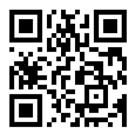
LabeLworld | 14 | 2023
Label Design
English TEXT
a copy of the book
Bottles in shelf test. During selection, the consumer’s visual attention was analyzed.
Download

USELY by All4Labels the sustainable rigid label for wet wipes packaging
All4Labels Global Packaging Group has recently launched an integrated solution for wet wipes, covering the flow pack and an eco-alternative to flip-top lids.

Sustainable packaging is now a reality. After many years as an emerging trend, the call for environmentally-friendly packaging solutions is getting concrete and no longer optional.Governmentpolicies,consumer preferences,andcorporatestandards aredemandingthatbusinessesimplementsustainablepackagingpractices to reduce the environmental impact. Thepackagingindustryismovingfast in the sustainable direction to realize and offer eco-friendly solutions. In order to reduce the environmental impact, All4Labels Global Packaging Group has recently launched an integrated solution for wetwipes, covering theflowpackandaneco-alternativeto flip-toplids.USELYisasustainablerigidlabelthatsupportsanopen&closure labelingsystemofwetwipespackaging andensuresproductprotection,great functionality, and sustainability.
Sustainable, functional and protective
Compared to a standard flow pack with a plastic lid, USELY achieves -83% of weight reduction and -71% ofthicknessreduction,withavaluable impact in terms of waste reduction. Furthermore,theavailabilityofdifferent mono-material structures – both mono anddoublelayer–enhancesrecycling opportunities while matching the best combination of materials.
The rigid label powered by All4Labels aims to optimize the consumer expe-

rience by guaranteeing functionality for more than 250 openings without tearing off the lid and easy handling, even with one hand only. Moreover, the wide range of shapes and sizes available helps brand owners to find the most user-friendly application to protect the product by keeping fresh the wetwipes. USELY is part of the integrated packaging solutions offered by All4Labels that, with its multi-plant networkandlong-standingexperience, is able to support brand owners end-
to-end owning the entire production process in-house: from design and prototyping supported by All4Graphics - the packaging design unit, to the printing phase of flow packs and rigid labels, and to the label application on reels. An interesting opportunity for brand owners to get an all-around solution and reduce complexity of the production process, which also has a positive impact on delivery times and operational coordination.
LabeLworld | 16 | 2023 TechUpdate
USELY, l’etichetta rigida sostenibile per le salviette umidificate
All4Labels Global Packaging Group ha recentemente lanciato una soluzione integrata per le salviette umidificate, che comprende sia il flow pack che un’alternativa ecologica ai coperchi flip-top.
Ilpackaging sostenibile è ormai realtà. Dopo essere stata per molti anni una tendenza emergente, la richiesta di soluzioni di imballaggio rispettose dell’ambiente sta diventando sempre più concreta e decisamente non più opzionale. Le politiche governative, le preferenze dei consumatori e gli standard aziendali richiedono alle aziende di implementare pratiche di imballaggio sostenibili per ridurre l’impatto ambientale. L’industria del packaging si sta muovendo rapidamente nella direzione della sostenibilità per realizzare e offrire soluzioni eco-compatibili. Per ridurre l’impatto ambientale, All4Labels Global Packaging Group ha recentemente lanciato una soluzione integrata per le salviette umidificate, che comprende sia il flow pack che un’alternativa ecologica ai coperchietti flip-top. USELY è un’etichetta rigida sostenibile che supporta un sistema apri e chiudi per le confezioni di salviette umidificate, garantendo protezione del prodotto, grande funzionalità e sostenibilità.
Sostenibile, funzionale e protettivo
Rispetto a un flow pack standard con coperchio in plastica, USELY consente di ottenere una riduzione del 83% nel peso edel 71% nello spessore, con un conseguente impatto positivo in termini di riduzione dei rifiuti. Inoltre, la disponibilità di diverse strutture monomateriale - sia mono che doppio strato - aumenta le opportunità di riciclo, offrendo ampia scelta nella combinazione di materiali. L’etichetta rigida fornita da All4Labels mira a ottimizzare la consumer experience garantendo la funzionalità per oltre 250 aperture senza strappare il coperchio e un sistema consente l’utilizzo anche con una sola mano. L’ampia gamma di forme e dimensioni disponibili aiuta i brandowner a trovare l’applicazione più user-friendly che protegga il prodotto mantenendo fresche le salviette umidificate. USELY fa parte delle soluzioni di packaging integrato offerte
The wet wipes market
Thegrowingexpansionofflexiblepackagingreflectsalsointhewetwipesmarket,whoseglobalsizeaccordingtorecentresearchisexpectedtoexpandat a CAGR of 3.6% from 2022 to 2030. The growth, led by consumers’ preferences towards wetwipes, seems to be pushed also by the increased range of product applications. In-
da All4Labels che, con la sua rete di stabilimenti e la sua lunga esperienza, è in grado di supportare i brandowner end-to-end, gestendo l’intero processo produttivo in-house: dal design e prototipazione supportati da All4Graphicsl’unità di packaging design, alla fase di stampa di flow pack ed etichette rigide, fino all’applicazione dell’etichetta sulle bobine. Un’opportunità interessante per i brandowner per ottenere una soluzione completa e ridurre la complessità del processo produttivo, con un impatto positivo in termini di tempi di consegna e coordinamento operativo.
Il mercato delle wet wipes
La crescente espansione dell’imballaggio flessibile trova un riscontro anche sul mercato delle salviette umidificate, le cui dimensioni globali, secondo una recente ricerca, si prevede crescano a un CAGR del 3,6% dal 2022 al 2030. La crescita, guidata dalle preferenze dei consumatori verso le salviette umidificate, sembra essere spinta anche dal crescente numero di applicazioni di prodotto. Sebbene siano prodotti molto comuni nel mercato della cura della persona per la cura dei bambini, struccanti e disinfettanti, le salviette umidificate diventano sempre più diffuse anche sul mercato della cura della casa (salviette per spolverare, pulire i vestiti e così via) e per applicazioni specifiche (cura degli animali domestici, pulizia delle lenti, cura della pelle). A ciò si aggiunge il crescente interesse dei consumatori verso tematiche sostenibili, che diventa un driver determinante dei comportamenti di consumo. Lo scenario generale porta quindi i brandowner a fare grande attenzione alla sostenibilità e di conseguenza a fare scelte responsabili legate tanto alla produzione dei prodotti, quanto all’imballaggio e alla distribuzione nella catena di approvvigionamento. Una tendenza di mercato da seguire e un’enorme opportunità per trasformatori e fornitori.
deed, as wet wipes are common products in the personal care market with baby care, make-up removers, and disinfectant wipes, they are also going to be more and more diffuse in the home care market (dusting wipes, cleaning clothes, and so on) aswellasforspecificapplications(pet care, lens cleaning, leather care). In addition, consumers are becoming
increasingly interested in sustainable issues, which are often a driver in their consumption behaviors. According to the overall scenario, brand owners are putting great attention to responsible choices connected to product production, packaging, and supply chain distribution. A market trend to follow and a huge opportunity for converters and suppliers.
LabeLworld | 17 | 2023 TechUpdaTe
Canon
a
combination of consistency and quality
Colour accuracy is a crucial element in daily production and occupies the many minds of brand owners and converters. The need for print consistency and quality to meet customer expectations and support brand building is greater than ever. However, colour consistency and accuracy alone are not the driving factors in the market. Colour consistency must be joined with manufacturing flexibility to meet the emerging requirements of the label and packaging market, such as shorter lead times and on-demand production, whilst producing coherent results.
A total package consisting of quality, productivity, reliability and cost-efficiency is necessary to meet highest expectations and provide absolute reassurance in print production. Digital technology optimises the packaging supply chain by cost-efficiently producing short to medium runs on-demand, whilst providing consistent results on a wide range of me

is limited to the print heads and fewer ink colours need to be purchased. As a result, converters can reduce their inventory, downtime and cost significantly and opt for quicker time to market, greater production efficiency and dependable output, job for job.
All the benefits of the Canon LabelStream 4000 series
The Canon LabelStream 4000 series combines the above mentioned benefits with the industrial
proven and robust print head technology, Xaar 2002+ U UV inkjet print heads. The Xaar 2002+ U are piezo-electric drop-on demand (DoD) inkjet print heads designed for excellent reproduction of vibrant colours, smooth tones and solid areas. Thanks to high pigment load and a new level of colour vibrancy, the LabelStream inks attain a colour gamut of 96% at a Delta E 2000 smaller than 2, allowing for highest print quality labels and accurately matched colours on standard label stock. The colour capabilities are supported by recent accreditations by renown institutes. The LabelStream 4000 series is the first multicolour digital press to be certified according to the Process Standard Digital (PSD) Print Check based on Fogra 55 reference gamut

LabeLworld | 18 | 2023 TechUpdate
The Canon LabelStream 4000 series combines the digital technology benefits with the industrial proven and robust print head technology, Xaar 2002+ U UV inkjet print heads.
Canon una combinazione di coerenza e qualità
La serie Canon LabelStream 4000 combina i vantaggi del digitale con la tecnologia delle testine di stampa a getto d’inchiostro UV Xaar 2002+ U, robuste e collaudate a livello industriale.
L’accuratezza del colore è un elemento cruciale nella produzione quotidiana e occupa molte menti dei proprietari di marchi e dei trasformatori. Il bisogno di coerenza e qualità di stampa per soddisfare le aspettative dei clienti e sostenere la costruzione del marchio è più grande che mai.
Tuttavia, la coerenza e la precisione del colore da sole non sono i fattori trainanti del mercato. L’uniformità del colore deve essere unita alla flessibilità di produzione per soddisfare i requisiti emergenti del mercato delle etichette e del packaging, come tempi di consegna più brevi e produzione su richiesta, producendo al contempo risultati coerenti.
Un pacchetto totale composto da qualità, produttività, affidabilità ed efficienza dei costi è necessario per soddisfare le più alte aspettative e fornire una rassicurazione assoluta nella produzione di stampa. La tecnologia digitale ottimizza la catena di fornitura del packaging producendo in modo efficiente in termini di costi tirature brevi e medie su richiesta, fornendo al contempo risultati coerenti su un’ampia gamma di supporti. Inoltre, i colori a getto d’inchiostro possono essere simulati digitalmente, il tempo di pulizia è limitato alle testine di stampa e si devono acquistare meno colori d’inchiostro. Di conseguenza, i convertitori possono ridurre significativamente il loro inventario, i tempi di inattività e i costi e optare per un time to market più rapido, una maggiore efficienza produttiva e un output affidabile, lavoro dopo lavoro.
Tutti i vantaggi della serie
Canon LabelStream 4000
La serie Canon LabelStream 4000 combina i vantaggi di cui sopra con la tecnologia delle testine di stampa robuste e collaudate a livello industriale, le testine di stampa a getto d’inchiostro UV Xaar 2002+ U. Le Xaar
defined by the Fogra Research Institute for Media Technology. Examined for colour fidelity, consistency, uniformity, print resolution and detail, LabelStream achieved the highest category score (Level A), indicating that the 7-colour benchmark gamut can be reached with only 5 colours. In addition, the
2002+ U sono testine di stampa a getto d’inchiostro piezoelettriche drop-on-demand (DoD) progettate per un’eccellente riproduzione di colori vivaci, tonalità omogenee e aree solide. Grazie all’elevato carico di pigmenti e a un nuovo livello di vivacità dei colori, gli inchiostri LabelStream raggiungono una gamma di colori del 96% con un Delta E 2000 inferiore a 2, consentendo di stampare etichette di altissima qualità e colori accuratamente abbinati su supporti standard. Le capacità cromatiche sono supportate da recenti accreditamenti da parte di rinomati istituti. La serie LabelStream 4000 è la prima macchina da stampa digitale multicolore ad essere certificata secondo il Process Standard Digital (PSD) Print Check basato sul gamut di riferimento Fogra 55 definito dal Fogra Research Institute for Media Technology. Esaminata per la fedeltà dei colori, la coerenza, l’uniformità, la risoluzione di stampa e i dettagli, LabelStream ha ottenuto il punteggio della categoria più alta (livello A), indicando che il gamut di riferimento a 7 colori può essere raggiunto con soli 5 colori. Inoltre, la serie LabelStream 4000 è anche la prima macchina da stampa a getto d’inchiostro UV ad essere dichiarata PANTONE® Capable. I trasformatori che cercano l’opacità del bianco della tradizionale stampa serigrafica rotativa possono sfruttare le elevate capacità di deposizione dell’inchiostro di LabelStream, che consentono un’opacità del bianco digitale dell’80% in una sola passata, offrendo un’alternativa economica ai lunghi processi di impostazione e ai costosi retini. Insieme agli inchiostri altamente pigmentati, alla produttività e alla qualità di stampa, la LabelStream offre le prestazioni e l’affidabilità che i produttori di etichette e imballaggi richiedono e di cui hanno bisogno per un business sostenibile delle etichette digitali.
LabelStream 4000 series is also the first UV inkjet label press to be asserted PANTONE® Capable. Converters seeking the white opacity of conventional rotary screen printing can make use of LabelStream’s high ink laydown capabilities, enabling single-pass digital white opacity of 80%, providing a
cost-efficient alternative to lengthy set-up processes and expensive screens. Coupled with the highly pigmented inks, productivity and print quality, the LabelStream delivers performance and reliability that label and packaging producers demand and need for a sustainable digital label business.
LabeLworld | 19 | 2023 TechUpdaTe
Gallus nuova vision sul futuro della stampa di etichette
Da metà dicembre 2022, Dario Urbinati ha assunto la carica di Chief Executive Officer per Gallus Group. Con 17 anni di esperienza nel settore, il nuovo CEO continuerà a dare impulso alla missione del Gruppo di portare il mercato del narrow web verso un futuro più sostenibile e redditizio.
• Parliamo di Gallus e della sua vision?
Il nostro Gruppo è in costante crescita, con collaboratori di grande talento e dedizione e, con il sostegno di Heidelberg alle spalle, un grande futuro davanti a sé. Mentre la nostra missione attuale si focalizza nel supportare il successo dei nostri clienti sul campo, la principale ambizione rimane quella di fornire loro servizi e tecnologie dinamiche per assicurare il futuro del settore narrow web.
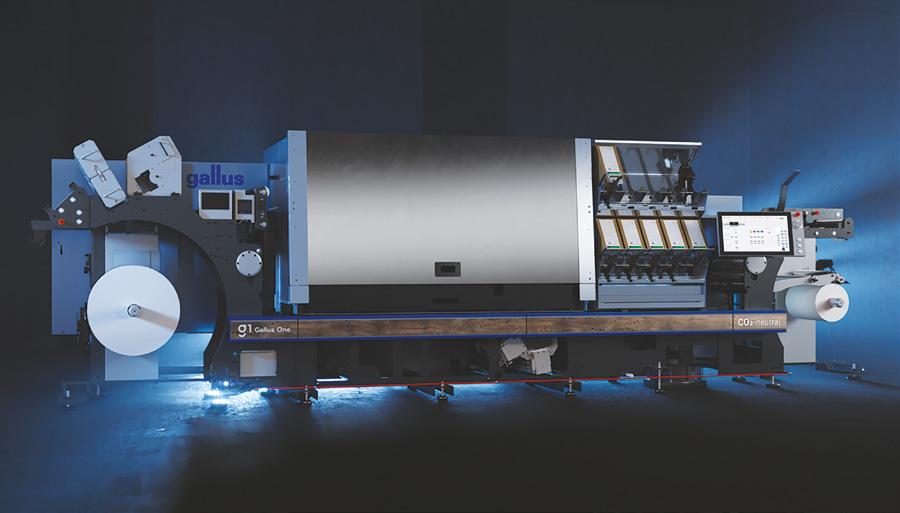
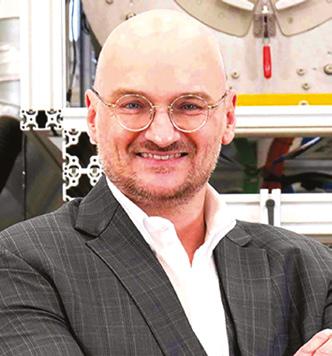
• A proposito della Gallus One, qual è il feedback che state ricevendo dal mercato?
La nuova linea di Gallus è stata accolta con entusiasmo dal mercato. Credo che clienti e prospect abbiamo capito cosa rappresenta questa macchina, che è parte del nostro processo di innovazione focalizzato principalmente sull’automazione, in grado di offrire grandi vantaggi. Abbiamo sfidato il modo in cui progettavamo e costruivamo le nostre macchine. La qualità è sorprendente, è un ottimo prodotto e le migliaia di clienti che l’hanno già
che offre. Vogliamo guidare il total cost of ownership per arrivare a consumo di energia e footprint ridotti, minore spreco di tempo, qualità di stampa più elevata. Siamo nella fase finale di questo progetto, stiamo testando tutto il processo per assicurarci che la macchina sia pronta a brevissimo per l’uso industriale.
• Qual è la vostra posizione rispetto alla sostenibilità?
Bisogna distinguere tra prodotti carbon neutral e produzioni carbon neutral. Stiamo lavorando nel campo sostenibilità già da diversi anni. Negli ultimi anni abbiamo ridotto drasticamente il consumo di energia nelle nostre fabbriche e abbiamo anche una partnership con il governo di St. Gallen che ci permette di operare in modo ancora più sostenibile. Quello della sostenibilità non è un tema nuovo per noi, la stiamo perseguendo da diversi anni. Adesso abbiamo iniziato il progetto Carbon Neutral con l’obiettivo di fornire prodotti con questa caratteristica. Naturalmente, abbiamo il supporto dalla nostra casa madre Heidelberg e
stiamo lavorando con istituzioni ed enti esterni per assicurarci di attenerci alle normative.
• A giugno aprirete il nuovo Gallus Experience Center, come si integra nella vostra strategia?
Innanzitutto, quest’anno Gallus compie 100 anni. Abbiamo percorso tutte le tappe delle innovazioni tecnologiche dell’ultimo secolo. Ci siamo chiesti quale sarà il prossimo sviluppo del settore e crediamo che la risposta sia l’ecosistema tecnologico. Guardando al portfolio Gallus, è evidente quanto sia ampio e complesso: non si tratta solo di nuove macchine, ma di software, servizi, un sistema di workflow, ecc. Per garantire benefici ai nostri clienti nel presente e nel futuro, è necessario dotarsi di tutte le più importanti tecnologie in-house. Essere parte del Gruppo Heidelberg, che ha tutte le tecnologie disponibili, ci pone in pole position per un ulteriore sviluppo di questo settore. Il konw how di Heidelberg rappresenta per noi un grande vantaggio. Per anticipare gli sviluppi di questo settore, abbiamo progettato e costruito un’infrastruttura in cui collaborare, insegnare, imparare, innovare, che costituisce un laboratorio per testare nuove sviluppi e ispirare nuove idee e fare esperienza dell’ecosistema. Da qui è nato, non soltanto uno spazio demo, ma un vero e proprio Experience Center, che crediamo sarà necessario per accompagnare il settore nei prossimi 100 anni.
• Ci può parlare del mercato italiano?
Il mercato italiano è davvero molto importante per Gallus e siamo contenti di
TechUpdate
Dario Urbinati, CEO di Gallus
poter contare sul team di Heidelberg Italia per il supporto ai nostri clienti. L’Italia è sempre stata un mercato progressista, gli stampatori italiani accettano le nuove tecnologie con entusiasmo e sono molto qualificati e professionali,
apprendono rapidamente e diventano presto autonomi. Gli ultimi anni sono stati un’esperienza molto interessante in Italia, dove sono installate molte macchine Gallus, dalle più tradizionali a quelle più moderne, come la Gallus
RCS e la Gallus Labelmaster. È un mercato importante anche per il digitale, che guida l’innovazione. Siamo entusiasti di avere forti partnership in Italia e speriamo che questo idillio possa continuare ancora per molti anni.
Gallus new vision on the future of label printing
As of mid-December 2022, Dario Urbinati took over as Chief Executive Officer for the Gallus Group. With 17 years’ experience in the industry, the new CEO will continue to drive the Group’s mission to guide the narrow web market to a more sustainable and profitable future.
• What about Gallus and its vision?
Our team is constantly growing, and with highly talented and dedicated employees, and of course with the support of Heidelberg behind us, we have a great future ahead. While our mission is focused on supporting the success of our customers in this industry, the wider goal here remains in providing them with dynamic services and technologies to secure the future of the narrow web industry. We are moving away from our current position into a new direction in which we believe the industry is going. As a result, we are updating and optimising our portfolio in order to provide maximum benefits for our customers.
• Speaking of the Gallus One, what feedback are you getting from the market?
The new Gallus One has been enthusiastically received by the market. I believe that customers and prospects have understood what this machine represents: it’s part of our innovation process, which focuses on automation to bring great advantages to our customers. With the Gallus One, we carried out several tests and experiments with our customers and really challenged the way we design and build our machines. We wanted to ensure the highest print quality whilst driving down the total cost of ownership (TCO), which goes hand-in-hand with achieving reduced energy consumption, a smaller carbon footprint and faster production times. The quality is amazing, it’s a great product and the thousands of customers who have already seen it are enthusiastic about the possibilities it offers. We are now in the final phase of this project, testing the whole process to ensure that the machine will be ready for widespread industrial use very soon.
• What is your position on sustainability?
We have been working in the field of sustainability for several years now, and for us, it’s been important to make a distinction between carbon-neutral products
and carbon-neutral production. In recent years, we have drastically reduced energy consumption in our factories, and we also have a partnership with the government of St. Gallen that allows us to operate even more sustainably. Sustainability is not a new topic for us; it’s something we have been pursuing for a long time. More recently, we have started the Carbon Neutral project with the aim of producing more carbon-neutral products. We also have the support of our parent company Heidelberg, and we are working with external institutions and bodies to ensure that we comply with key sustainability regulations.
• In June, you will open the new Gallus Experience Centre, how does it fit into your strategy?
First of all, this year Gallus is turning 100 years old. As a business, we have covered almost every stage of technological innovations over the past century. We have continually asked ourselves what the next development in the industry will be, and we believe that the answer now is ecosystem technology. Looking at the Gallus portfolio, it is evident how broad and complex it is: it is not just about producing new machines, but about software, services, a workflow system, etc. In order to benefit our customers now and in the future, it is crucial to be equipped with all important in-house technologies. Being part of the Heidelberg Group, with its strong technological expertise, puts us in pole position for further development in this area – Heidelberg’s focus here is a huge strength for us. In order to anticipate future developments in this sector, we have designed and built an infrastructure where we can collaborate, teach, learn and innovate. We’ve created a laboratory for testing new developments, inspiring new ideas and experiencing this ecosystem of the future. This vision has resulted in not only a demo space, but a real Experience Centre, which we believe will be absolutely necessary to help drive the industry forward over the next 100 years.
LabeLworld | 21 | 2023 TechUpdaTe
English TEXT
Pubbliservice punta su Durst servizio professionale in tempi contenuti
Nel mese di marzo l’azienda parmense ha installato una seconda stampante per etichette Durst TAU, modello RSC, per ampliare ulteriormente il proprio reparto produttivo.
“Il nostro obiettivo è soddisfare le richieste di una clientela diversificata, operante in svariati settori merceologici, offrendo in ogni occasione una risposta professionale rapida e concreta”. Da sempre questa è la mission che contraddistingue Pubbliservice, realtà nata a Parma nel 1984 come serigrafia tradizionale dalla passione della famiglia Salati, ancora oggi alla guida dell’azienda. Nel 2015 la scelta di ampliare il business con l’apertura di una nuova divisione dedicata alla stampa digitale di etichette, in grado di interagire con i sistemi di finitura tradizionali, tra cui serigrafia, stampa a caldo, embossing e verniciatura flexografica. Un’intuizione
che ha trovato immediato riscontro nel mercato, portando Pubbliservice a investire, già nel 2017, nel primo sistema di stampa Durst TAU.
Fiore all’occhiello dell’intero reparto produttivo, TAU è attualmente impiegata nella stampa di piccole e medie tirature di etichette e adesivi direttamente in bobina, realizzati su supporti plastici quali PE, PP, PVC e PET, ma anche carte patinate o naturali. “Il nostro portfolio clienti comprende piccoli produttori e contoterzisti che si rivolgono a noi per la
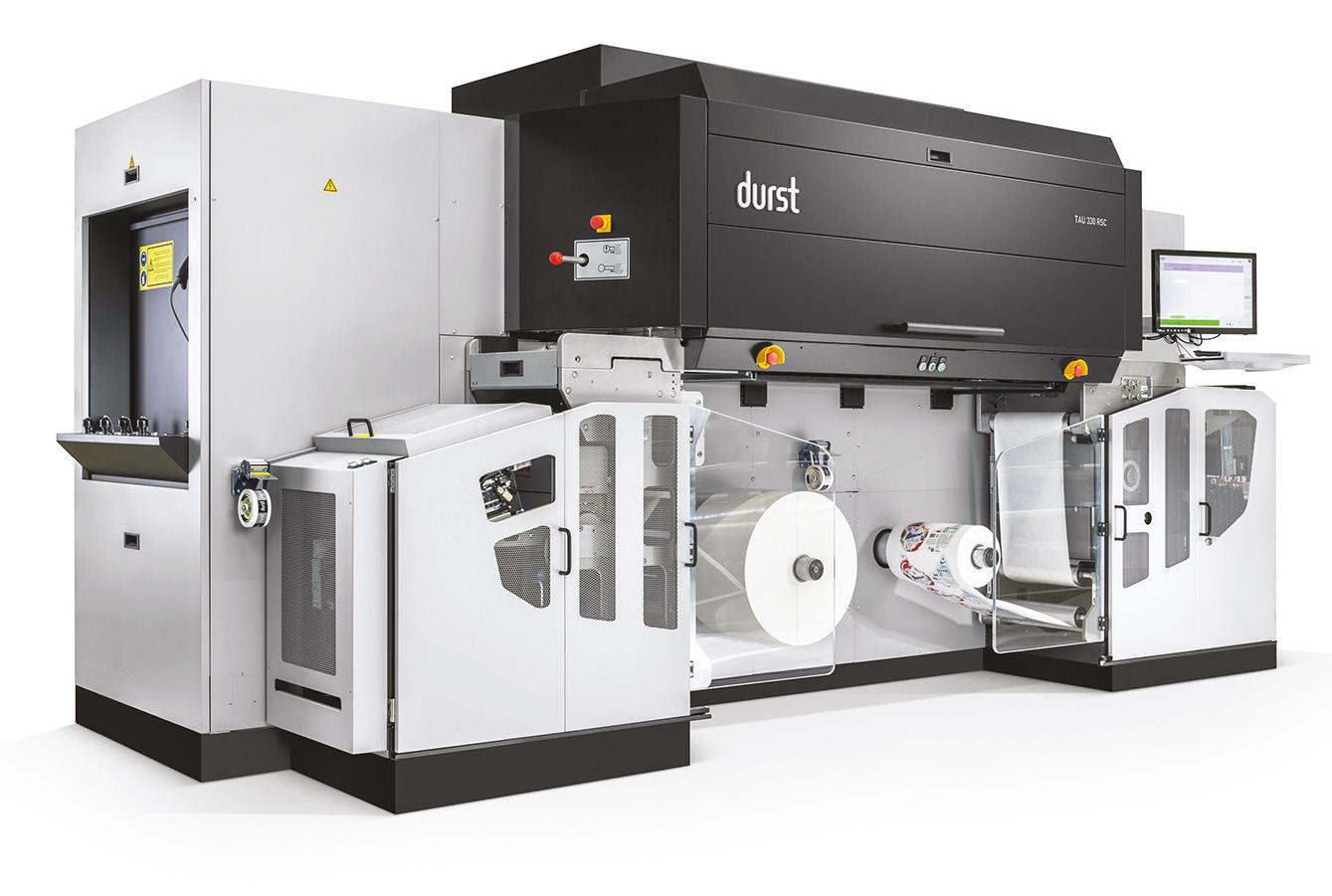
realizzazione di prodotti altamente personalizzati”, spiega Filippo Salati Responsabile commerciale Pubbliservice, “Un servizio per il quale la tempestività di esecuzione e la qualità assicurate da TAU rappresentano un elemento fondamentale”.
Una produzione sempre più ampia
“Nel corso degli anni abbiamo ampliato costantemente la produzione, puntando sempre sulle tecnologie più avanzate”, prosegue Salati. Lo sviluppo del business di Pubbliservice e la continua crescita che caratterizza negli ultimi anni il settore del label, hanno portato l’azienda ad ampliare ulteriormente il proprio reparto produttivo investendo in una seconda Durst TAU modello RSC. Una scelta dettata dalla volontà di puntare a nuovi mercati potendo soddisfare tempestivamente con questa nuova installazione anche le richieste di una clientela con numeri più rilevanti. “La serietà e la disponibilità dell’azienda e dello staff di Durst, con cui collaboriamo proficuamente, ci ha spinti ad investire

LabeLworld | 22 | 2023 TechUpdate
Da destra Maria Francesca Donati, Nicole Salati, Stefano Salati e Filippo Salati
senza indugi puntando nuovamente su questa tecnologia”, commenta Salati.
Focus sulla stampante
Durst TAU RSC
Installata a marzo 2023, la nuova TAU RSC scelta da Pubbliservice è dotata, come il precedente modello, di una configurazione CMYK + Bianco. Inoltre, è equipaggiata
con una telecamera di ispezione che permette di verificare in tempo reale la qualità di stampa. “La nuova TAU RSC, che si affianca a quella già in funzione, contribuirà ad ottimizzare l’efficienza produttiva, garantendo qualità di stampa ottimale anche su supporti più complessi da trattare, ampliando nel contempo lo specchio delle tirature”, afferma Salati.
Progettata per un utilizzo intensivo 24/7, TAU RSC assicura qualità con 1.200 x 1.200 dpi e goccia da 2 picolitri, produttività industriale fino a 80 m/min, anche per applicazioni a dati variabili. Tra gli obiettivi di Pubbliservice per il prossimo futuro c’è, infatti, anche lo sviluppo di uno shop online dedicato proprio alla stampa di etichette personalizzate.
Pubbliservice relies on Durst professional service in very short time
In March, the Parma-based company installed a second Durst TAU printing system, RSC model, to further expand its production department.
“Our goal is to meet the needs of clients which operate in different markets. To do that we always offer a quick and professional replay in a very short time.” This has always been the mission of Pubbliservice, a reality founded in Parma in 1984 by Salati family, who still leads the company. At the very beginning Pubbliservice was a traditional screen printing company. In 2015 the Salati family decided to expand the business with the opening of a new division fully dedicated to digital label printing. This new business unit is capable of interacting with traditional finishing systems, including screen printing, hot stamping, embossing and flexographic varnishing. It was an intuition that found immediate market success, leading Pubbliservice to invest in 2017 in the first Durst TAU printing system. TAUistheflagshipoftheentireproductiondepartment. This system is currently used in the printing of small and medium runs of labels and stickers directly on a reel, made on plastic substrates such as PE, PP, PVC and PET, as well as coated or naturalpapers.“Ourcustomerportfolioincludessmall manufacturers and subcontractors who turn to us for the production of highly customized products,” explains Filippo Salati - Pubbliservice sales manager. “A service for which the execution timeliness and the printing quality assured by TAU represent a fundamental element.”
An increasingly large production
“Over the years we have constantly expanded our production capability, always focusing on the
most advanced technologies”, explains Salati. The development of Pubbliservice’s business and the continuous growth that characterizes the label market in recent years have led the company to further expand its production department by investing in a second Durst TAU RSC. This choice is based on the will to target new markets by being able to promptly meet the demands of customers with larger numbers. “The seriousness and availability of the company and of the Durst team, with whom we collaborate profitably, prompted us to invest again in Durst technology,” says Salati.
Focus on Durst TAU RSC printing system
The new TAU RSC, installed at Pubbliservice last March, is equipped with a CMYK + White configuration like the previous model. It is also equipped with an inspection camera that allows real-time print quality check. “The new TAU RSC, which complements the one already in operation, will help us to optimize production efficiency, ensuring excellent print quality even on more complex substrates. In the meantime, we can also expand the mirror of print runs,” says Salati. Designed for intensive 24/7 use, TAU RSC ensures quality with 1,200 x 1,200 dpi and 2 picolitres drop, industrial productivity up to 80 m/min, even for variable data applications. For the near future among Pubbliservice’s goals there is the development of an online shop dedicated to custom label printing.
LabeLworld | 23 | 2023 TechUpdaTe
English TEXT
OMET porta la stampa sostenibile all’Innovation Park
“The Green Side of Printing” è stato il tema del secondo open house organizzato da OMET presso il nuovo Innovation Park, il 28 e 29 marzo 2023. Visitatori da tutta Europa hanno potuto conoscere le ultime proposte di stampa sostenibile, assistere alle demo di stampa sulle macchine flexo OMET KFlex e XFlex X6, e visitare i nuovi OMET Headquarters e l’ampio reparto produttivo.

Negli ultimi anni ci siamo trasformati pian piano in consumatori decisamente più consapevoli e molti di noi, prima di acquistare un prodotto, si fanno delle domande circa la sua sostenibilità e il suo impatto ambientale. Parlando di stampa è inevitabile farsi delle domande sulla carta, sugli inchiostri, sul consumo energetico e sugli scarti prodotti: come è possibile avere un processo di stampa sostenibile e con un basso impatto ambientale?
Per rispondere a queste domande OMET ha organizzato un evento dedicato alla stampa sostenibile dal titolo “The Green Side of Printing” che si è tenuto il 28 e 29 marzo 2023 all’Innovation Park OMET. Alcuni
dei principali partner tecnologici di OMET hanno portato soluzioni e case history su come ridurre l’impatto ambientale del processo di stampa su etichette e imballaggi flessibili, in termini di materiali, inchiostri, consumo energetico e utilizzo di processi green.
In dettaglio sulla XFlex X6 e sulla KFLEX
Tutti i visitatori hanno avuto inoltre la possibilità di vedere delle dimo -
strazioni di stampa sulle macchine OMET installate presso l’Innovation Park: in particolare la XFlex X6 e la nuova KFLEX, tutte attrezzate con impianti di asciugatura flexo UVLED. La linea XFlex X6 può integrare diverse tecnologie di stampa e di converting in linea e può processare tutti i tipi di substrati, dai film di 12 micron al cartoncino leggero, ottenendo molti tipi di applicazioni, per soddisfare le richieste dei diversi mercati di destinazione. XFlex X6 dispone di un ineguagliato sistema di stampa flexo Direct-Drive e grazie al sistema Vision brevettato da OMET, completamente automatico senza necessità di intervento da parte dell’operatore, basato sulla scansione digitale ad alta velocità per una regolazione perfetta

LabeLworld | 24 | 2023 TechUpdate
OMET sustainable printing lands at the Innovation Park
“The Green Side of Printing” was the second open house organized by OMET at the new Innovation Park, on March28-29th 2023. Visitors from all over Europe had the occasion to know about the latest sustainable printing solutions, to attend live demos on the OMET KFlex and XFlex X6flexo machines, and to visit the new OMET Headquarters and production department.
Overthe recent years we became gradually more conscious consumers who evaluate sustainability and environmental impact before buying any product. About printing, we now evaluate paper, inks, energy consumption and waste: we wonder how to have a sustainable printing process with a low environmental impact.
To answer these questions, OMET organized an event dedicated to sustainable printing entitled “The Green Side of Printing” which wa sheld on 28 and 29 March 2023 at the OMET Innovation Park. Some of OMET’s technological partners have brought solutions and case histories on how to reduce the environmental impact of labels and flexible packaging printing process, in terms of materials, inks, energy consumption and green processes.
Focus on XFlex X6 and the new KFLEX
All visitors also had the opportunity to see printing demos on OMET machines at the Innovation Park: in particular the XFlex X6 and the new KFLEX, all equipped with UV-LED flexo drying systems.
The Xflex X6.0 flexo machine can integrate several printing and converting technologies in-line and can process all kind of substrates, from
e controllo del registro sia longitudinale che trasversale, riduce radicalmente i tempi di allestimento e gli scarti durante start-up, garantendo l’ottimizzazione della produttività e risultati di qualità superiore. La nuova KFlex ha il suo punto di forza nella sua modularità senza precedenti che ne fa una piattaforma multitasking. La macchina è stata progettata per essere intuitiva
12-micron film to light carton, producing many types of applications to satisfy the requests of different target markets. XFlex X6 features an unrivaled Direct-Drive flexo printing system and thanks to OMET’s patented Vision system, fully automatic without operator intervention, based on a multiple camera scanning system for perfect adjustment and register control, radically reduces set-up times and waste during the startup phase, optimizing productivity and giving higher quality results.
The strength of the new KFlex is its unprecedented modularity that makes it a multitasking platform. The machine is designed to be intuitive and safe for printers to use, to improve set-up times and reduce material waste. The new Dual Servo standalone flexo cassette can be configured with UV drying on chill drum, UV on the web, or hot air, and a modern interface with touchpad controls make it easy to use as it integrates all the main operating functions, preventing the operator from constantly moving between the end and beginning of the line. Reduced paper passage significantly limits the level of material waste, and the integration of next-generation servo motors allows automatic adjustment and control of register, as well as double pass and slipping operations.
e sicura da usare per gli stampatori, migliorando i tempi di approntamento e riducendo gli sprechi di materiale. Il nuovo cassetto flexo indipendente Dual Servo può essere configurato con asciugatura UV su tamburo raffreddato, UV su piano o aria calda e presenta un’interfaccia moderna con comandi touchpad che lo rendono facile da usare poiché integra tutte le prin -
cipali funzioni operative evitando all’operatore continui spostamenti tra fine e inizio linea. Il passaggio carta ridotto limita notevolmente il livello dello scarto di materiale e l’integrazione di servomotori di nuova generazione consente di regolare e controllare automaticamente il registro, nonché di eseguire operazioni di ripassaggio e slittamento.
LabeLworld | 25 | 2023 TechUpdaTe
English TEXT
Fujifilm soluzioni esclusive per il packaging
L’azienda è consapevole che la stampa può aggiungere valore al packaging e sta combinando l’esperienza nelle più recenti tecnologie di stampa digitale con un patrimonio analogico per creare un portfolio esclusivo per la stampa analogica e digitale di imballaggi, dimostrando il suo impegno nella sostenibilità.
Nell’ambito delle soluzioni analogiche, Fujifilm propone le sue rinomate lastre flexo lavabili in acqua Flenex FW che eliminano i solventi dannosi per l’ambiente spesso utilizzati nel processo di produzione delle lastre e sono più durevoli della maggior parte delle alternative, il che significa meno cambi di lastra e meno sprechi. I vantaggi sostenibili vanno di pari passo con una maggiore stabilità in macchina e una qualità superiore e più uniforme. Inoltre, recentemente è stata presentata la gamma di inchiostri per narrow web, che Fujifilm produce da molti anni e che si sono guadagnati una reputazione di mercato sia per qualità che per versatilità.
Jet Press FP790 per imballaggi flessibili
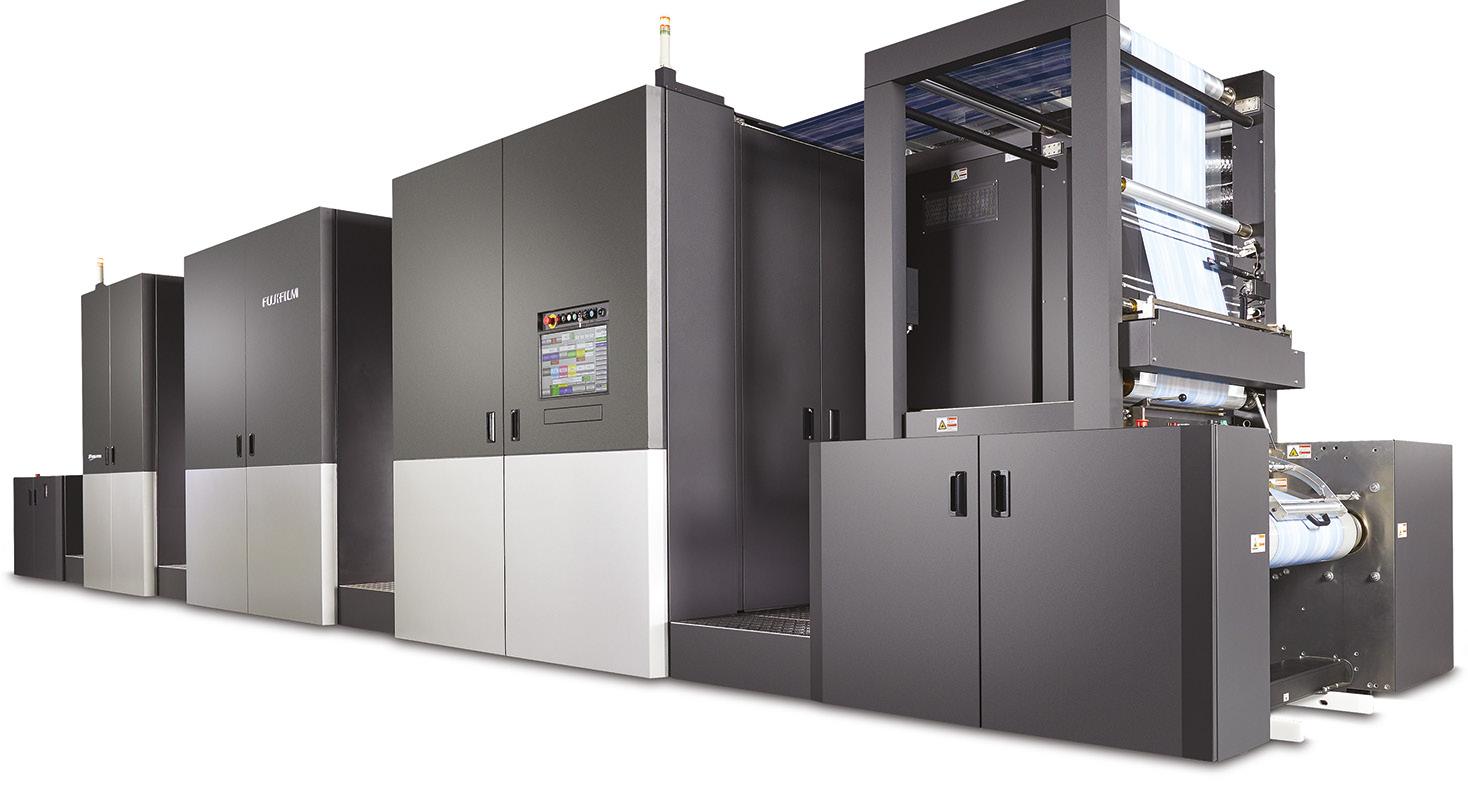
Fujifilm propone al mercato la macchina da stampa digitale per imballaggi flessibili Jet Press FP790. Basata su decenni di esperienza nel getto d’inchiostro Fujifilm, il sistema è progettato per offrire un’alternativa digitale alla produzione flessografica per applicazioni mainstream e tirature di stampa e soddisfa le esigenze strategiche delle aziende che devono affrontare la sfida di gestire una varietà sempre più ampia di prodotti, con conseguente proliferazione di SKU e tempi di consegna più brevi. La produttività di 50 m/min indipendentemente dal numero di colori,
insieme all’elevato tempo di attività della macchina e alla possibilità di cambiare i lavori di stampa e le regolazioni di progettazione in pochi minuti, garantisce un’efficienza produttiva estremamente elevata.
Ampia gamma di colori e altissima qualità
Le testine di stampa con risoluzione 1200x1200 dpi insieme agli inchiostri CMYK consentono alla Jet Press FP790 di offrire una densità di colore estremamente elevata. La macchina da stampa è in grado di realizzare oltre il 90% della gamma di colori Pantone®, utilizzando allo stesso tempo due canali per inchiostro bianco per garantire un bianco ad alta opacità, e tutto questo con una stabilità cromatica senza precedenti. L’ampia gamma di colori permette di ottenere la corrispondenza di
colori spot e speciali dei marchi senza necessità di utilizzare altri inchiostri speciali.
Un processo di stampa
più sostenibile
Fujifilm utilizza primer a base acqua e tecnologie a getto d’inchiostro ecocompatibili, che rispettano o addirittura superano i requisiti normativi per la stampa di imballaggi flessibili. La Jet Press FP790 riduce gli sprechi e il numero di materiali di consumo normalmente utilizzati nella produzione analogica ed elimina completamente tutti gli elementi del processo di produzione delle lastre. Attraverso soluzioni analogiche e digitali, Fujifilm dimostra anche come le aziende di packaging possono essere più sostenibili. Le lastre Flenex di Fujifilm, ad esempio, riducono gli sprechi ed eliminano completamente l’uso di solventi dannosi per l’am-
LabeLworld | 26 | 2023 TechUpdate
Fujifilm a range of unique packaging solutions
The Company recognises how print can add value to packaging, and is combining expertise in the latest digital print technologies with an analogue heritage to create a unique portfolio that supports the production of both analogue and digitally printed packaging, all while demonstrating a commitment to sustainability.
Interms of analogue solutions, Fujifilm provides its renowned Flenex FW water-washable flexo plates that eliminate environmentally harmful solvents often used in the plate-making process and are more durable than most alternatives, meaning fewer plate changes and less waste. The sustainable benefits go hand-in-hand with greater press stability and higher, more consistent quality. Fujifilm can offer a range of narrow web inks, which the supplier has been manufacturing for many years, and which have earned a market reputation for both quality and versatility.
Jet Press FP790 digital flexible packaging press
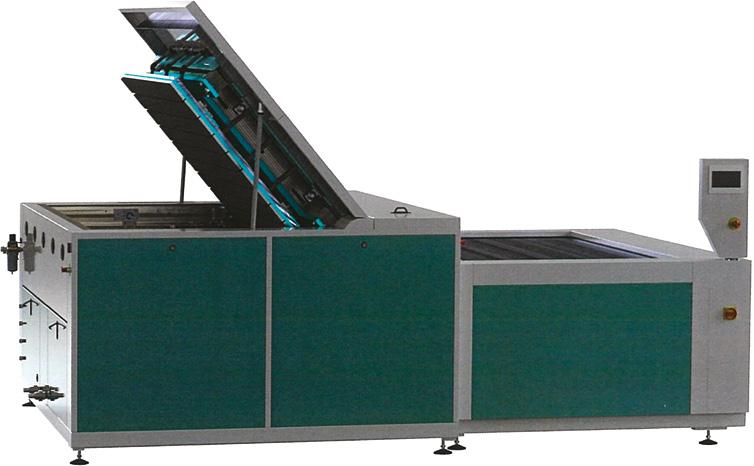
Fujifilm provides the Jet Press FP790 digital flexible packaging press, built on decades of Fujifilm inkjet expertise. The system is designed to offer a digital alternative to flexo production for mainstream applications and print runs, and meets the strategic needs of businesses faced with the challenge of dealing with the proliferation of SKUs, a widening variety of products and shorter delivery times.
The press runs at extremely high productivity levels of 50 m/min irrespective of the ink colours, and has a very high uptime, contributing to the overall performance. Productivity of 50 m/min no matter the number of colours, combined with high machine uptime and the ability to changeprinting jobs
biente e, se combinate con l’unità filtrante PRC1 dell’azienda, anche l’uso di acqua è ridotto al minimo.
Il sistema di polimerizzazione UV a LED di Fujifilm riduce drasticamente il consumo di energia e gli inchiostri per narrow web dell’azienda sono privi di solventi e prodotti nel Regno Unito nella rinomata fabbrica di Broadstairs, dove viene prestata estrema attenzione per garantire che tutti i processi di produzione e operativi siano il più possibile responsabili dal punto di vista ambientale.
and design adjustments withina matter of minutes means extremely high production efficiency.
Wide colour gamut and ultra-high quality
1200x1200 dpi resolution printheads in combination with CMYK inks, enable the Jet Press FP790 to deliver extremely high colour density. The press can also achieve more than90% of the Pantone® colour gamut, while also using two white ink channels for delivering high white opacity, all with unprecedented colour stability. The wide colour gamut allows converters to achieve special brand and spotcolour matching with no need for additional special inks.
Sustainability
Acrossbothanalogueanddigitalsolutions,Fujifilmdemonstrates how packaging businesses can be more sustainable. Fujifilm’s Flenex plates, for example, reduce waste and eliminate the use of environmentally harmful solvents altogether, and when combined with the company’s PRC1 filtration unit, also minimise water. Similarly, Fujifilm’s imprinting solutions can breathe new life into an analogue production line, bringing additional functionality without the investment in a new line.Where anewinvestmentisnecessarytomeetmarketneeds,the JetPress750SandJetPressFP790digitalpresseseliminatemanyoftheprocessesandconsumablesassociated with traditional analogue production.
Allo stesso modo, le soluzioni di imprinting di Fujifilm possono dare nuova vita a una linea di produzione analogica, apportando funzionalità aggiuntive senza l’investimento in una nuova linea. Laddove è necessario un nuovo investimento per soddisfare le esigenze del
mercato, le macchine da stampa digitali Jet Press 750S e Jet Press FP790 eliminano molti dei processi e dei materiali di consumo associati alla produzione analogica tradizionale.
LabeLworld | 27 | 2023 TechUpdaTe
English TEXT
Weigang WL340 REM Edition velocità, efficienza e qualità

Per affrontare le nuove sfide del mercato del labeling, che richiedono macchinari sempre più performanti in termini sia di qualità del materiale stampato sia di risparmi per le aziende, REM punta sulla Weigang WL340 REM Edition.
Il progetto della WL340 REM Edition
è iniziato nel 2013 quando in REM
è nata l’idea di proporre al mercato wine&spirits (ma non solo) una macchina multiprocesso che in un unico passaggio potesse restituire un prodotto finito, di qualità, senza ulteriori passaggi successivi. L’obiettivo era quello di velocizzare i processi riducendo i tempi, quindi i costi, ma rispettando al contempo uno standard qualitativo elevato. In sintesi produrre etichette in modo sostenibile: meno scarti, meno tempo, meno costi con una precisione e velocità che solo una macchina “tutta in linea” può dare.
Oltre 60 installazioni in Italia
“Ad oggi sono state installate in Italia oltre 60 linee multiprocesso di Weigang WL340 REM Edition ed in questo senso i numeri parlano per noi”, afferma Ettore Maretti, managing director di REM. “Una delle ultime linee realizzate molto complessa ci ha permesso di racchiudere tutte le unità di nobilitazione, così in occasione dell’evento virtuale di settembre 2022 abbiamo pensato di creare delle etichette che potessero rappresentare al meglio l’idea del multiprocesso: etichette originali e davvero esplicative di tutte le pregiate nobilitazioni che questa macchina mette a disposizione degli stampatori. Per citarne
alcune: serigrafia argento, serigrafia in rilievo e 3d foil. Una macchina davvero all’avanguardia che utilizza brand Italiani ed Europei leader mondiali nel motion e nel controllo come Bosch Rexroth, BST, Caber, Deco System e VTI e che non può mancare nel parco macchine delle aziende che vogliono essere competitive in tutti i settori del labeling”.
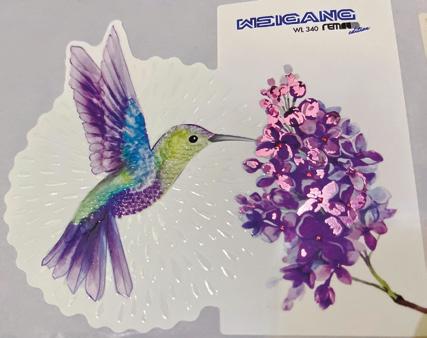
Ideale per il mercato enologico… e non solo
A questa macchina è stato dedicato un open day virtuale che si è svolto nel mese di settembre, ospitato dall’etichettificio Label it Spa, dove è stata mostrata la Weigang WL340 REM Edition più grande e completa del mercato nazionale, con tutte le nobilitazioni disponibili. La configurazione della Weigang WL340 REM Edition prevede: 6 gruppi offset, 3 gruppi serigrafici piano cilindrici, 2 gruppi per lamina a caldo e goffratura in piano.
Questa soluzione permette di stampare e nobilitare ad alto livello un’etichetta in un unico passaggio anche con oro colato direttamente in linea ad alte velocità dì produzione paragonabili a quelle di una rotativa.
Le caratteristiche di questa macchina la rendono perfetta per le etichette del mercato enologico che devono essere assolutamente originali, preziose e distintive, ma non solo, è ideale anche per tutti gli altri settori ove sia necessario ottenere una riduzione degli scarti, dei tempi di avviamento e dei costi di impianti, senza dimenticare l’importanza dell’eliminazione dei ripassaggi su lavori complessi e un aumento delle possibilità di nobilitazioni.
La Weigang WL340 REM Edition è infatti progettata per sfruttare i vantaggi delle tecnologie piana e rotativa, per ridurre i costi degli impianti, per essere precisa e veloce nel processo di stampa e può essere inoltre dotata di numerosi optional.
Tra quelli disponibili: unità di laminazione combinata per plastificazione autoadesiva, plastificazione umido e cold foil; unità di delam relam e stampa su adesivo; sistema di taglio con lame longitudinali; controllo automatico del registro; gruppo stampa flexo UV sia semirotativo che rotativo; gruppo controllo remoto dei calamai e molto altro.

LabeLworld | 28 | 2023 TechUpdate
Leader nella digitalizzazione
Semplifica la tua produzione di etichette

SOLUZIONI PER ETICHETTE BOBST
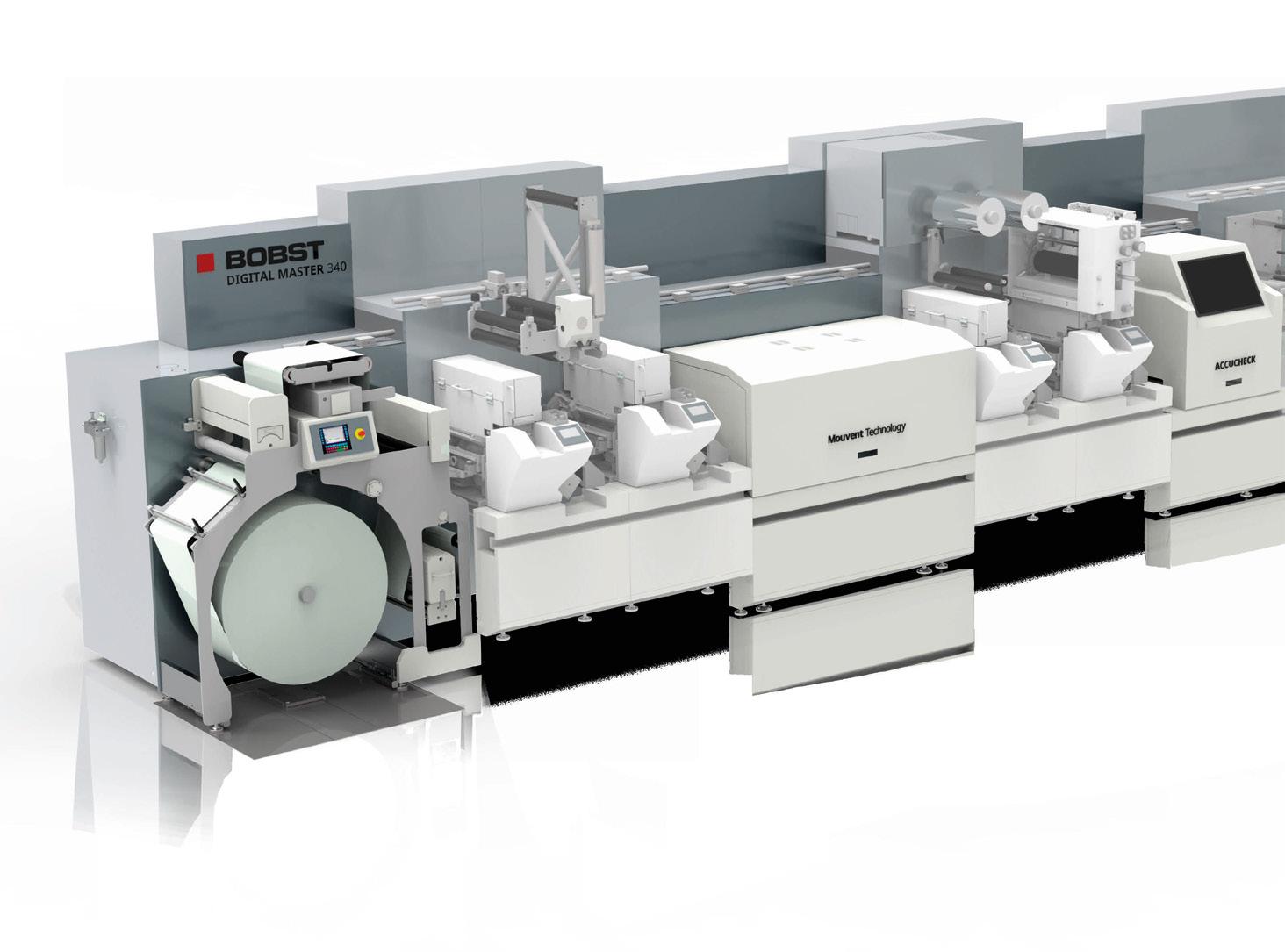
BOBST, uno dei fornitori leader mondiali di attrezzature e servizi per l’industria dell’imballaggio, semplifica la produzione di etichette con soluzioni digitali e flessografiche altamente automatizzate e modulari.
Sei interessato? Trova il tuo rappresentante locale BOBST su www.bobst.com/contact
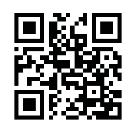
www.bobst.com
ˍ
Scopri di più
al mercato Flexless 350 Servo

Il nuovo progetto Flexless 350 Servo di BAMA nasce come risposta alle crescenti richieste del mercato di piccole tirature di etichette personalizzate, nobilitate e con consegne just in time ed è stato reso possibile attraverso il know how dell’azienda coadiuvato dalla partnership con costruttori di riferimento nel settore stampa e finishing.
Fper quelle aziende che non vogliono o non possono stravolgere il flusso di lavoro esistente, condizione indispensabile per l’ottenimento di buoni risultati con la tecnologia digitale o che non ne apprezzano le peculiarità.
Flexless 350 Servo
Flexless 350 Servo è una macchina da stampa semirotativa per etichette nel formato di stampa 350x350 mm che combina i punti di forza della tecnologia flessografica di ultima generazione a un’ampia gamma di tecnologie multi-processo in linea per la finitura e la nobilitazione del prodotto stampato (coldfoil, hotfoil, goffratura, serigrafia, fustellatura, delam-relam...), aggiungendo di fatto valore, senza però creare un collo di bottiglia nella produzione, così da garantire un rapido time-to-market per la maggior parte dei prodotti trattati. La macchina offre ampia versatilità di stampa su ogni tipo di materiale: carta, cartoncino, PET, BOPP e PVC, e come opzione anche film non
i costi per gli impianti, l’avviamento e lo scarto di materiale sono ridotti al minimo, poiché la nuova linea di stampa dispone del sistema cambio rapido a sleeve dell’azienda Rossini e dell’autoregistro longitudinale e trasversale della tedesca BST, che ne semplificano notevolmente l’utilizzo da parte dell’operatore.
Produttività senza pari Queste caratteristiche la rendono la scelta ideale per cicli di produzione rapidi, lavori che richiedono versioni multiple con cambi di grafica frequenti, ma non solo: grazie alla sua alta velocit à di stampa (75 m/ min), dà ottimi risultati anche sulle medie tirature, assicurando una produttività senza pari e ampliando il mercato di riferimento.
La macchina, oltre ad avere i requisiti dell’industria 4.0, integra anche il sistema di gestione Quantum, prodotto dall’azienda KDS, che provvede a un’accurata raccolta dei dati di produzione per migliorarne l’efficienza operativa, aiutando gli operatori a
raggiungere gli obbiettivi, riducendo gli sprechi e i tempi di inattività. Inoltre, consente alla proprietà di avere dati certi, attraverso i quali prendere decisioni al fine dell’ottenimento di un maggior valore aggiunto dei prodotti venduti.
Servizio customer care
a 360°
L’obiettivo di BAMA è poi garantire non solo macchine di altissima qualità, ma anche il loro funzionamento costante nel tempo, impegnandosi a fornire un servizio customer care a 360°, che comprende training per gli operatori, fornitura di pezzi di ricambio, manutenzione predittiva e controllo da remoto.
Flexless 350 Servo è quindi la risposta per quei produttori di etichette e imballaggi che richiedono una perfetta combinazione di qualità, produttività, affidabilità ed efficienza con un prezzo flessibile in base alla configurazione scelta, in modo da servire al meglio questo mercato in continua evoluzione.
LabeLworld | 30 | 2023 TechUpdate BAMA
presenta
BAMA presents Flexless 350 Servo to the market
The project Flexless 350 Servo was born as a response to the growing market demands for small runs of customized labels, embellished and with just-in-time deliveries. The realization was possible, through the know-how of BAMA assisted by the partnership with referenced manufacturers in the printing and finishing industry.
Flexless 350 Servo therefore stands as an alternative investment for those companies that do not want or cannot overturn the existing workflow, an indispensable condition for achieving maximum effectiveness with digital technology or that do not appreciate its peculiarities.

Focus on Flexless 350 Servo
Flexless 350 Servo is an intermittent printing machine for labels in the 350x350 mm print format that combines the strengths of the latest generation flexographic technology with a wide range of multi-process technologies, in line for finishing and embellishing of the printed product (cold foil, hot foil, embossing, screen printing, die-cutting, delamrelam...), effectively adding value, without however creating a bottleneck in production, so as to guarantee a rapid time-to-market for most of the treated products. The machine offers wide printing versatilityon any type of material: paper, cardboard, PET, BOPP and PVC, and as an option also unsupported film.
The set-up time, the costs for the cliché, the start-up and the material waste are reduced to a minimum since the new printing line has the quick sleeve change system, of the Rossini company, the longitudinal and transversal self-register of the German BST, which greatly simplify the use by the operator. These characteristics make it the ideal choice for fast production cycles, jobs that require multiple versions with frequent graphic changes, but not only: thanks to its high printing speed (75 m/min), it gives excellent results even on medium runs, ensuring unrivaled productivity, thereby expanding its reference market. In addition of the requirements for industry 4.0, the machine also integrates the Quantum management system, produced by the KDS company, which provides an accurate collection of production data to improve its operational efficiency, helping operators to achieve the objectives, reducing waste, downtime and allowing the property to have certain data with which to make decisions in order to obtain a greater added value of the sold products. BAMA’s goal is then to guarantee not only top quality machines, but also their constant operation over time by committing to provide a 360° customer care service, which includes training for operators, supply of spare parts, predictive maintenance and remote control. Flexless 350 Servo is therefore the answer for those label and packaging producers, who require a perfect combination of quality, productivity, reliability and efficiency, with a flexible price based on the chosen configuration, in order to best serve this ever-changing market.
LabeLworld | 31 | 2023 TechUpdaTe
English TEXT
LED UV di GEW la scelta vincente di etic.a
I dirigenti di etic.a hanno compiuto la scelta coraggiosa di aggiornare tutte le loro macchine da stampa passando ai LED UV e per farlo si sono rivolti a GEW, azienda con cui collaborano dal 2014.
etic.a è un’azienda di stampa di etichette di grande successo a Pomezia, alla periferia di Roma, fondata nel 2009 da Gianni Olivieri e sua moglie Patrizia. L’azienda è cresciuta costantemente nel tempo e ora impiega circa 35 persone, generando un fatturato di circa 10 milioni di euro. Il mantra guida dell’azienda è che “il cliente viene prima di tutto”.

Una fiducia rinnovata etic.a serve una vasta gamma di settori, tra cui automotive, alimentare, vino, liquori, cosmetici, cura della casa e della persona. L’azienda rimane all’avanguardia in un mercato competitivo, attraverso continui investimenti in tecnologia e persone. etic.a collabora con GEW per i suoi sistemi di polimerizzazione UV dal 2014 e quindi, quando è arrivato il momento di passare ai LED UV, GEW è stata una scelta naturale. Gianni Olivieri, Amministratore Delegato dell’azienda, commenta: “Quando abbiamo deciso di passare al LED, abbiamo fatto delle ricerche di mercato e abbiamo deciso di andare avanti con GEW per tre motivi: la qualità del prodotto, la qualità dell’organizzazione - abbiamo da sempre avuto un buon rapporto - e anche il prezzo.” La for-
nitura e l’installazione di tutti e tre i sistemi UV LeoLED è stata eseguita da Fornietic Srl, partner di distribuzione esclusivo di GEW per l’Italia. Il team di gestione di etic.a ha compiuto il passo coraggioso di aggiornare tutte e tre le loro macchine da stampa a LED UV, contemporaneamente. Ciò ha fatto seguito a un periodo significativo di lavoro di ricerca e sviluppo all’interno dell’azienda per garantire una transizione agevole e di successo, come spiega Vito Di Martino, Operations Manager: “Abbiamo deciso di cambiare tutti i sistemi UV a LED perché abbiamo fiducia nella nostra esperienza e nella ricerca fatta con gli inchiostri, le vernici e tutti i supporti per le etichette. Quindi sappiamo che questo cambiamento non avrà alcun impatto sul nostro lavoro e sarà un successo.” Il passaggio è stato ulteriormente semplificato poiché si è preparato

il sistema di raffreddamento prima dell’installazione dei LED; quindi, gli aggiornamenti sono stati molto rapidi e non hanno avuto alcun impatto sulla nostra produzione.
Il passaggio ai LED UV
Olivieri spiega le ragioni principali della loro scelta di passare ai LED UV: “Ciò che era molto importante per noi è innanzitutto, ovviamente, voler ridurre i costi dell’elettricità. In secondo luogo, utilizzando i LED si riduce l’impatto sull’ambiente. Terzo, ultimo ma non meno importante, l’attenzione alle persone. Perché la nostra gente è meno esposta al rumore.” Da quando è stata presa la decisione di passare al LED, l’aumento dei costi energetici ha aggiunto un’ulteriore dimensione e ridotto significativamente il periodo di ritorno dell’investimento previsto per l’azienda, come afferma Olivieri: “L’aspetto finanziario è uno dei motivi per cui abbiamo scelto di passare al sistema LED. Poiché i costi dell’elettricità stanno aumentando molto rapidamente, il

TechUpdate
Gianni Oliveri e Patrizia Windfang, fondatori di etic.a
UV LED by GEW the winning choice of etic.a
The managers of etic.a took the bold step of upgrading all three presses to full UV LED and to do so they turned to GEW, a company they have been collaborating with since 2014.
etic.aisahighlysuccessfullabelprintingcompanyinPomezia, on the outskirts of Rome. It was founded in 2009 by Gianni Olivieri and his wife Patrizia. The company has grown steadily and now employs around 35 people, generating a revenue of around 10 million euros. The company’s guiding mantra is that “the customer is first”. etic.a serves a wide range of industries, including automotive,food,wine,spirits,cosmetics,homeandpersonal care.Thecompanystaysattheforefrontinacompetitive market, through continuous investment in technology and people.
A renewed trust
etic.a has partnered with GEW for its UV curing systems since 2014 and so, when the time came to upgrade to UV LED, GEW was a natural choice. Mr. Olivieri, the company’s Managing Director, comments: “When we decided to move to LED, we made market research and we decided to go on with GEW because of three reasons... the quality of product, the quality of the organisation - we had the good relationship - and also the price.” The supply and installation of all three LeoLED UVsystemswasfulfilledbyFornieticSrl,GEW’sexclusive distribution partner for Italy. The management team at etic.a took the bold step of upgrading all three of their presses to UV LED, at once. This followed a significant period of R&D work within the company to ensure a smooth and successful transition, as Vito Di Martino, OperationsManager,explains:“Wedecidedtochangeall the LED system because we have the confidence in our expertise and all the research with the inks, varnish and all support for labels. So we know that this change don’t impact in our work and will be a success.” The changeover was further simplified as they prepared the cooling
ritorno dell’investimento è più breve di quanto ci aspettavamo.”
Il direttore di produzione Sergio Pasquini è responsabile di tutta la produzione quotidiana di etic.a. Descrive l’effetto che l’aggiornamento dei LED UV ha avuto sul lavoro del team di produzione: “Tecnicamente non è cambiato nulla. Abbiamo la stessa qualità, la stessa velocità, ma
system prior to the LED installation, so the upgrades were seamless and did not impact on their production.
The transition to UV LED
Olivieri explains the key reasons for their choosing to movetoUVLED:“Whatwasveryimportantforusisfirst, obviously, we want to reduce electricity cost. Second, using LED you reduce the impact to the environment. And third, last but not least, attention to the people. Because our people are less exposed to noise.” Since the decision to switch to LED was made, soaring energy costs have added a further dimension and significantly reduced the company’s projected ROI period, as Olivieri states: “The financial aspect is one of the reasons why we chose to move to the LED system. Because of the costs of electricity are going up very fast, the return of investment is shorter than we expect.” Production Manager Sergio Pasquini is responsible for all of etic.a’s day-to-day output. He describes the effect that the UV LED upgrade has had on the production team’s work: “Technically nothing has changed. We have the same quality, same speed, but the good thing is that we have no noise from the fans as we had with UV, or smell of ozone, that is no longer. The rollers stay cleaner because the ink dries better, that is a great thing… we are very satisfied with the investment and installation”. The company is now in a much stronger position through its investment, with fasterproduction,enhancedsustainabilitycredentialsand lowerproductioncoststoenableacompetitiveedge.The team’s confidence in UV LED has led to their complete switch over to this technology, as Di Martino sums up: “We are now completely LED system and have no conventional UV curing.”
la cosa buona è che non abbiamo il rumore delle ventole che avevamo con i sistemi UV, e l’odore di ozono, che non c’è più. I rulli rimangono più puliti perché l’inchiostro si asciuga meglio; è un’ottima cosa... siamo molto soddisfatti dell’investimento e dell’installazione.” L’azienda è ora in una posizione molto più forte grazie al suo investimento, con una produ-
zione più rapida, migliori credenziali di sostenibilità e costi di produzione inferiori per consentire un vantaggio competitivo. La fiducia del team nei LED UV ha portato al loro completo passaggio a questa tecnologia, come riassume di Martino: “Ora siamo un’azienda completamente a LED e non abbiamo più polimerizzazione UV convenzionale.”
LabeLworld | 33 | 2023 TechUpdaTe
English TEXT
CCL Label, sustainable and digital Label Solutions
At Interpack 2023, CCL Label showed labels and sleeves that weredevelopedforbetterrecyclingoftheprimarypackaging suchasPETbottles,returnableglassbottlesandotherpackagingtypeslikeHDPEandPPcontainers.Thelabelshavespecial built-infeaturesthatsupportinthesortingandrecyclingstages byeasilydetaching,floatingorshrinking.
“Many of the solutions of the sustainable label family, such as the low-density polyolefin shrink sleeve EcoFloat®, the Pressure-Sensitive Label for returnable glass bottles, WashOff, and EcoStream® that was developed for PET bottle recycling, have been endorsed by the European PET Bottle Platform (EPBP) and follow the recommendations of the RecyClass”, explains Marika Knorr, head of Sustainability&Communication. “We are active members of these organizations to make sure, that our label innovations are in line with the official DesignforRecyclingGuidelinesbecausewewanttosupport the increase in recycling of FMCG goods.”
“Returnable systems for example like we have seen them for beerandwater,areontheriseinmanycountriesduetochanging legislation and an increased awareness for sustainable solutions”, says Simon Peace, vice president Sales & Marketing Beverage Worldwide. “We are proud to have established

WashOff labels in the market for many years now and that haveaproventrackrecordwithmajorbrandswhenitcomesto thelabelsexcellentperformanceonthewashingandrefilling lines”.Asapremiere,CCLpresentedthethinneststretchsleeve in the market that is available at the moment – the EcoStretch sleeve has a thickness of 30 micron. It was especially designed for returnable 1 Liter PET bottles that are typically used in the German mineral water market. This decoration technology has a very small carbonfootprinttostartwith,becausethe material is very thin and can be applied to the container without using any heat or energy – the sleeve attaches to the conainer with its own elasticity. “This extremely thin stretch sleeve is a very sustainable solution. At 30 micron the sleeve is a lot thinner than the ‘standard’ 45 micron sleeves that are usually used, so a lot less raw material is needed to manufacture this sleeve. This helps reduce the carbon footprint of the product,” says Danny Freund, business development director for stretch sleeves at the Voelkermarkt site in Austria. “We calculated that beverage brands can save up to 32 tons of plastic material per 100 million sleeves–whichisapproximatelytheweight of over 5 adult African elephants.”
L’etichettatura degli imballaggi tra ombre e criticità
L’entrata in vigore dell’obbligo di etichettatura degli imballaggi, a inizio 2023, ha portato con sé dubbi e domande su come muoversi correttamente. In un recente webinar di GIPEA - Gruppo Italiano Produttori Etichette Autoadesive - il Segretario Italo Vailati ha fatto luce su alcune delle principali criticità che coinvolgono gli etichettifici.L’intervento si è aperto con un excursus sulla storia della normativa europea per la gestione degli imballaggi, a partire dal 1994 e fino alle più recenti e controverse novità. Il D. Lgs. 116/2020 ha reso obbligatoria la marcatura degli imballaggi, con le indicazioni di destinazione finale e del codice alfanumerico, definito sulla base della decisione 97/129/CE della Commissione Europea. Il 22 novembre 2022 è stato pubblicato il decreto 360/222, che riporta in allegato l’attesa linea guida che stabilisce le corrette regole da seguire per etichettare tutti gli imballaggi.
In particolare, è stato chiarito che la normativa riguarda due casistiche:
- gli imballaggi destinati al circuito industriale e al trasporto (B2B);
- Le possibili soluzioni.
Nel corso del webinar sono state inoltre approfondite le opzioni possibili per rispondere correttamente all’obbligo di marcatura, individuando una importante alternativa all’apposizione fisica delle informazioni sull’imballaggio. È possibile rendere disponibili tali informazioni tramite canali digitali a scelta, come App, QR Code o siti web, per semplificare i processi produttivi, operativi ed economici delle imprese che immettono tali imballaggi in più Paesi dell’Unione Europea. Qualora si opti per canali digitali, devono essere facilmente note e accessibili all’utente le istruzioni per intercettare le informazioni obbligatorie. Dalla lettura del testo, è possibile trarre alcune importanti considerazioni. Su tutti gli imballaggi (primari, secondari e terziari) i produttori devono indicare la codifica alfanumerica prevista dalla Decisione 97/129/CE. Tutti gli imballaggi devono essere etichettati nella forma e nei modi che l’azienda ritiene più idonei ed efficaci per il raggiungimento dell’obiettivo: i canali digitali possono sostituire completamente o integrare le informazioni riportate direttamente sull’imballaggio
Per gli imballaggi in plastica realizzati con polimeri o loro combinazione non previsti espressamente nella Decisione 97/129/ CE si può far riferimento alle norme UNI EN ISO 1043-1 per l’identificazione. Il webinar si è concluso con esempi concreti su come costruire l’etichettatura.
LabeLworld | 34 | 2023 Breaking NEWS
AccurioLabel 400 per i mercati di fascia medio-alta
In anteprima assoluta per l’Italia, sono stati presentati i dettagli del nuovo sistema di stampa per etichette AccurioLabel 400 di Konica Minolta, che si rivolge ai professionisti dei settori delle etichette e del packaging di medio-alto volume e offrirà una stampa digitale di altissima qualità a prezzi accessibili.
Konica Minolta accelera la sua crescita nei mercati delle etichette e del packaging. La prima presentazione ufficiale in Italia si è tenuta presso il Digital Imaging Square, lo Showroom di Milano di Konica Minolta. La macchina è a disposizione presso il DIS di Viale Certosa per Demo dedicate a clienti e prospect. AccurioLabel 400 non è solo ideale per gli stampatori di fascia medio/alta, ma è anche ottima in affiancamento al precedente modello AccurioLabel 230 per i professionisti che desiderano espandere la propria attività nei mercati in costante crescita della produzione di etichette e del packaging. Poiché la digitalizzazione del settore delle etichette continua ad accelerare con una crescita annua prevista a doppia cifra, è importante per gli stampatori cogliere questa opportunità di crescita. Tra le novità più interessanti della nuova AccurioLabel 440 vi è la possibilità di ampliare le applicazioni e di stampare su supporti trasparenti grazie alla quinta stazione colore, che consente di ottenere un bianco con un’opacità elevatissima in un unico passaggio. La nuova 400 raggiunge una maggiore produttività grazie a una stampa

superveloce, fino a 40 metri al minuto in quadricromia. È dotata di automazione avanzata per un flusso di lavoro più integrato ed efficiente: calibrazione automatica, controllo della stabilità del colore, regolazione della densità e creazione di profili.
L’Intelligent Quality Care IQ-520 di Konica Minolta migliora la user experience e l’automazione di AccurioLabel 400, consentendo all’operatore di beneficiare di livelli di controllo più elevati. Con una capacità di scrittura equivalente a 3600 dpi, il sistema digitale a toner di Konica Minolta è in grado di gestire due diverse larghezze di banda, 330 e 250 mm, offrendo un’elevata qualità di output. AccurioLabel 400 consente inoltre dei cicli di stampa più lunghi: la lunghezza di ciascun lavoro può essere di 3.000 metri lineari, svolgitore e riavvolgitore possono alloggiare bobine di 800 mm di diametro e la cartuccia del toner è più ampia, così da consentire una produzione senza interruzioni. La nuova stazione per il 5° colore con il toner bianco può essere impiegata in numerosi tipi di applicazioni. Il bianco ad alta opacità permette di aggiungere grafiche dall’effetto “no-label look” alla gamma di prodotti di stampa.
Premium white BOPP facestock for pressure sensitive labels

Combining the best of both worlds: Innovia Films has recently applied their surface technology to their material science, by developing a uniquely engineered printable coated cavitated BOPP facestock film, Rayoface™ AQBSA. Designed for pressure-sensitive labelling (PSL) applications, the film is 58 microns thick, has a printabletop-coating,andanadhesive-receptivecoatedsurfaceonthereverseside. “AQBSAissuitableforusewithinawiderangeofmarketsegmentssuchasHousehold and Personal Care, Food and Beverage, and other consumer packaged goods sectors”,explainsLucijaKralj,BusinessUnitDirectorLabels.“The5-layertechnology inthecavitatedbasefilm,meansAQBSAisahigh-performanceproductthatgives both superb economics and a high yield.” With an extremely high opacity of 91%, Rayoface™ AQBSA provides a brilliant white surface, and even after top-coatings, has EU food contact compliance. The enhanced coating technology of Innovia Films means AQBSA provides the off-press ink adhesionlabelprintingrequires,aswellastheprintandcold-foilingappearancethePSLmarketdemands. Thisfilmhasalready undergone in-depth trialling and shown excellent results throughout the PSL supply chain and is available immediately.

LabeLworld | 35 | 2023 Breaking NEWS
Multi-layer packaging, separated and recycled on an industrial scale
Multi-layerfilmsareusedforawiderange ofpackagingmaterials,particularlyinthe food industry. The European Green Deal stipulatesthatpackagingmustberecyclabletoalargeextentby2030.Inthefuture, thedetailswillberegulatedbythePackaging and Packaging Waste Regulation (PPWR).Adraftregulationwaspresented inNovember2022.However,upuntilthis point,therecyclingofmulti-layerfilmhas provendifficultbecausethefilmismade of different materials. A collaboration project involving the companies BASF, Krones,SÜDPACK,andTOMRAhasnow demonstratedthatitispossibletoseparate PET/PEmulti-layerpackagingintoitsindividualcomponentsandreturnthemtothe materials cycle as raw materials. During thefirstindustrialtrialconductedataKronespilotplantinFlensburg,thepartners wereabletocompletelyseparateasmuch as 69 percent of the PET/PE components andpartiallyseparateanothertwelvepercent. This approach is special as it uses
theexistinginfrastructureonlytorecycle themulti-layerpackaging.Thefirstphase of the project was initiated in early 2021 whenTOMRAconductedthefirstsorting trialswithPET/PEtrays.Thesetrayshad beenmanufacturedbySÜDPACKusinga “debondingadhesive”developedbyBASF. SÜDPACK, a manufacturer of high-performancefilmsforthepackagingoffood, non-foodandmedicalproducts,hascommittedtobecomingazero-wastecompany. Toclosethematerialscycle,therecyclable multi-layer films first have to be sorted out of the waste stream. The main determinant of success for this step was the abilityoftheAUTOSORTTMtechnology ofTOMRAtoseparatetherecyclablePET/ PEtraysfromnon-recyclabletrays.Krones, a company that, among other things, develops plastics recycling systems, joined theprojectteaminJuly2022.Atoneofthe company’spilotplants,trialswerecarried outtotestwhetherit’spossibletoseparate laminated PET/PE films to their single
layers in an industrial scale. A standard hot washing process commonly used for PET recycling was applied sucessfully and as a result, the separated PET and PE can be re-used as monomaterials. The processofseparatingthePETandPEcomponentsofthefilmisbasedonadhesives that were specifically developed for this purpose.Theseadhesivesareusedduring thelaminationofmulti-layerfilmstojoin differentfunctionalmaterials.Thelaminationadhesivemusthavethebestpossible adhesivestrengthwhenrequired,butstill makes it possible to easily separate the two films when it comes time to recycle. BASF’s water-based Epotal® adhesives already yielded very good results when separating multi-layer packaging in the laboratory. Theprojectisstillongoing.By adjustingvariousparametersoftherecycling process and by further developing thelaminationadhesiveused,theproject partners see additional opportunities for improvingtherecyclingrateforplastics.
RFID in Italia, benefici e prospettive


Un’indagine condotta da GS1 Italy insieme all’RFID Lab dell’Università di Parma rileva come la Radio Frequency Identification nella supply chain si stia facendo strada nelle aziende italiane. Con risultati molto positivi, spesso superiori alle attese. La Radio Frequency Identification (RFID) sta guadagnando spazio nella supply chain del largo consumo in Italia: oltre metà delle imprese dei settori grocery e fashion intervistate in Italia ha già inserito questa tecnologia, in maniera stabile (31%) o in fase di test (22%). La fotografia scattata da GS1 Italy mostra uno scenario in sviluppo, caratterizzato da un grande interesse per i benefici di questa tecnologia. Il 23% delle imprese che stanno sperimentando l’RFID ha intenzione di adottarla in futuro e il 56% dei non fruitori si dichiara intenzionato a implementarla in un futuro più o meno prossimo (e il 13% ha già un progetto RFID nella pipeline d’impresa). Tra i principali driver per l’introduzione della tecnologia RFID gli intervistati hanno indicato nel 61% dei casi un ritorno dell’investimento (ROI) positivo, nel 57% la possibilità di ottenere un vantaggio competitivo
e nel 41% la necessità di allinearsi ai competitors. In misura minore, anche l’influenza dei partner della filiera, gli incentivi dell’Industria 4.0 e i bandi pubblici vengono indicati come possibili boost all’implementazione dell’RFID nelle aziende. L’automatizzazione dei processi logistici distributivi (77% delle risposte), la visibilità delle giacenze (62%) e la necessità di evitare out-of-stock (53%) sono, invece, le tre principali motivazioni che hanno spinto finora aziende, service provider e operatori a intraprendere un percorso di digitalizzazione attraverso RFID e Internet of Things. Così come, in misura minore, anche il miglioramento dell’accuratezza nella gestione dell’inbound e della puntualità dei richiami, la prevenzione dei furti, la visibilità dell’avanzamento della produzione, la gestione della tracciabilità degli asset trading dei partner, la gestione delle date di scadenza e il monitoraggio della catena del freddo. Obiettivi raggiunti, visto che la quasi totalità dei rispondenti delle aziende implementatrici ha indicato che i risultati ottenuti sono stati in linea o molto spesso al di sopra delle aspettative, in particolare nella riduzione degli errori di allestimento ordini, nell’incremento dell’efficienza operativa e in quello dell’accuratezza inventariale. Se i benefici generati dall’RFID sembrano notevoli, gli ostacoli risultano limitati e poco rilevanti (soprattutto mancate letture, in particolare in presenza di liquidi e metalli, ed eccesso di prestazioni che richiede l’utilizzo di schermature), e i risultati di successo dimostrano che sono comunque aspetti risolvibili.
LabeLworld | 36 | 2023 Breaking NEWS
Fedrigoni
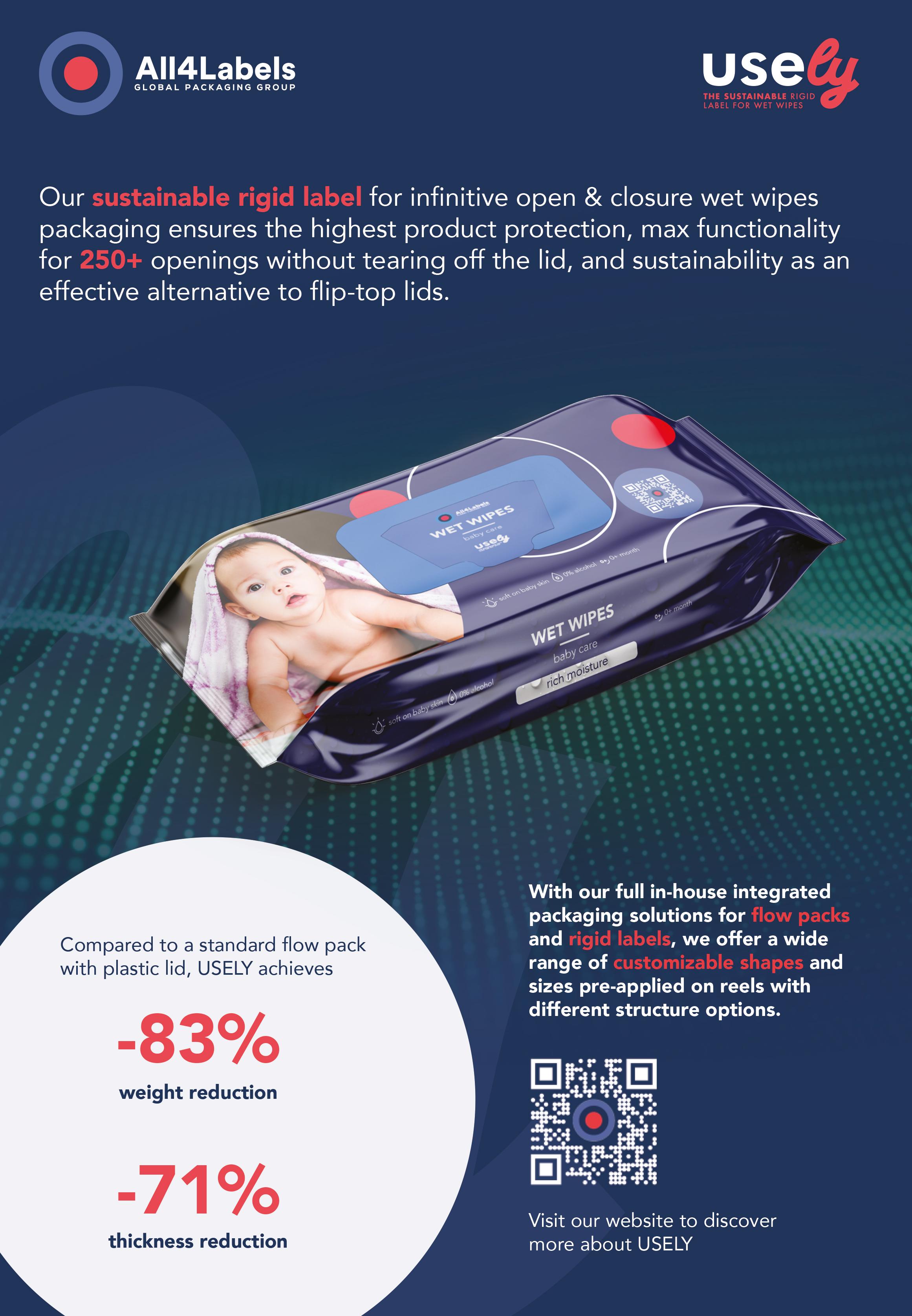
A showcase of excellence in the world of labels
In view of the next FINAT European Label Forum, that will be held in Vienna from 31 May to 2 June, the winners of the FINAT Label Competition 2023 will be awarded. Here below you can discover the winners of the 2022 edition competition.
Best in show
Gerolemo Maratheftiko Sweet by CABAS
The story behind the Best In Show label for the 2022 FINAT Label Competition involves history dating back to the Middle Ages. The label reflects an era of Kings, Knights and Royalty referring to the “Kingdom of Cyprus” (a Crusader Kingdom) which was founded in 1197 six years after the occupation of Cyprus by Richard the Lionheart of England. The reproduction of the Coat of Arms depicts three rampant lions and a cross is reproduced in great detail and along with the “flourishes” surrounding the shield and the product name gives that royal feeling to the excellently printed label. The combined combination of great gold foiling and High Build varnish against a smooth matt sand coloured recycled paper meant that Gerolemo-Maratheftiko Sweet entered by Cabas S.A., Greece was selected by the panel of judges as the Best In Show winner. This label also won the Digital Group Award at the 42nd Annual Competition.
Group A: Marketing/End-uses
Marzek Etiketten+Packaging for Côtes du Rhône

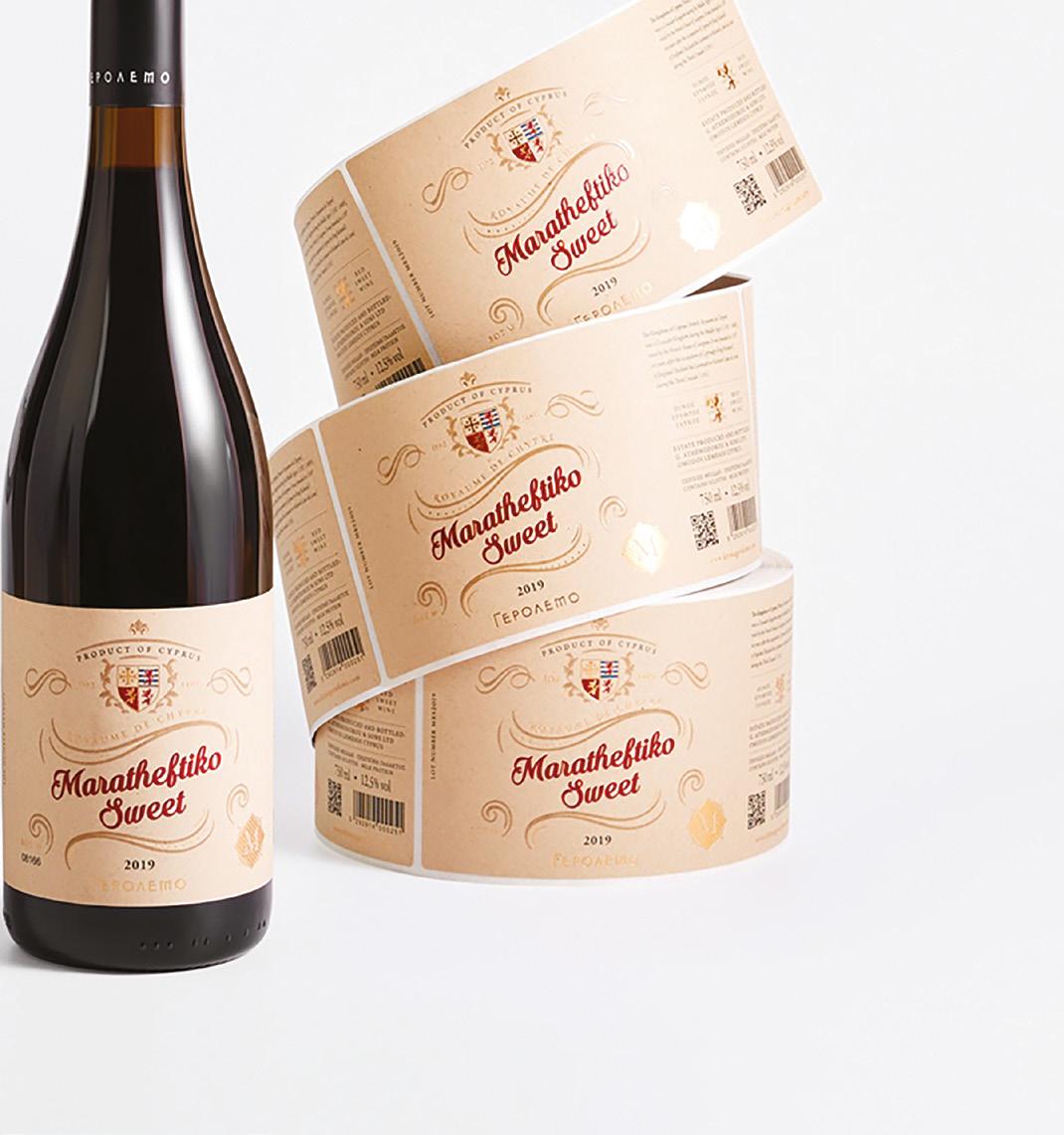
The jury could not separate two entries for the Marketing/End –Uses Group therefore joint winners were awarded. The first winner was Marzek Etiketten+Packaging GmbH, Austria for Côtes du Rhône. This is a bright and colourful label. The black line round the images of the flowers serves to highlight them and to give them a clear separation from the clean bright substrate. Printed digitally with a very accurately placed screen varnish in four colours, the silky appearance of the substrate adds a real touch of class to the label and projects the images of the flowers into high relief. The subtle use of hot foiling to highlight the name of the wine is excellent. A 67lpcm screen gives great definition to the main images of the flowers.

LabeLworld | 38 | 2023 Label Story
Thecompetitionisorganised on an annual basis and as usual FINAT were able to rely on the experience and services of an expert and dedicated team of judges. The judging panel was led by Tony White of AWA Consulting ably supported by MuratSipahioglu,SalesDirectorofIMEKSGroupandSteveWood,theowner of Steve Wood Services. After collating the entries along with the respective technical information, the labels were thensentphysicallytothethreejudges
for their independent and crucial initial assessments before meeting virtually to determine the final winning entries. The competition attracted 205 entries from 38 companies from 21 countries worldwide. In addition to the 7 Group winners and the 34 Category winners a total of 73 Highly Commended certificates were distributed. The leading number of countries entering this year was led by Austria with 32 entries with Turkeyclosebehindwith26entries.The numberofentriesineachcategorywas predictably led by Wines (46), Alcohol-
ic Drinks (36), Sets of Labels (22) and Cosmetics (17). The number of entries printed using digital technology (108) continues to increase year on year by more than 30%. The digital element is becoming more noticeable, not only in the printing process but also in the finishing, die-cutting and in the final use of the label. The Group winners are organised into the following main groups which include A. Marketing/End Uses, B.PrintingProcesses,C.Non-Adhesive Applications,D.Innovation&Electronic Printing and E. Digital Printing.
Group B: Printing Processes Kuresa for Body Spa Conditioner


The winner of the Printing Processes Group was Kuresa, Peru for Body Spa Conditioner. A very understated label printed using a combination of letterpress and screen technology in six colours on a film substrate. The label contains some very fine typography using an opaque white screen ink. The subtle green background shows a branch of a pepper tree and red peppers depicting the plant from which the product is manufactured. A 150lpi screen adds a high degree of definition to the final result.
Ҫiftsan Label & Packaging Company for Alqaissi Grill Spices

The second winner was Ҫ iftsan Label & Packaging Company, Turkey for Alqaissi Grill Spices. A very busy and complicated label. The use of a metallised film substrate adds overall brightness to the label and gives the impression that gold foiling has been used. The application of matt lamination contrasts nicely with the high gloss varnish over the image of the meat. Both the fine line black type and the reversed out white type are printed to a very high standard. The basic printing process is digital. With this label the more you study it the more detail becomes obvious. How many observers noticed the highlighted glossy image of the fork above the meat board or the shiny green leaf? A really well designed and high quality label with masses of detail to hold the interest of the observer.
Group C: Non-adhesive Applications
IPE Industria Gráfica for Nightology Sachet
The judging panel found it impossible to separate two labels in the Non-Adhesive Applications Group so again we are presented with two group winners. The first was IPE Industria Gráfica, Spain for Nightology Sachet. Flexography has been used to great effect on a matt silver metallic substrate. The white reversed out printing on the black background obviates the need for using foiling to highlight both the type and the illustrations. The detail in the lions head is excellent making it stand out against the background. Printed in five colours which includes a primer, gold lacquer two blacks, PMS 7509 and an overall matt varnish. The lion’s head with all its fine detail appears majestically dominant and needs no further images to support it.
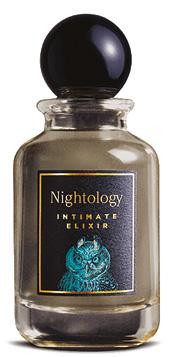
LabeLworld | 39 | 2023 F inaT L abe L c ompe T i T ion
Stratus Packaging for Champagne Christian Senez Evenementielle
The second winner was Stratus Packaging, France for Champagne Christian Senez Evenementielle. A sleeve that spells out quality at first glance and reflects the quality of the product, champagne. One colour, black, has been printed by flexo to a very high standard and is augmented by a touch of silver cold foiling. The silk screen varnish on the logo and signature adds that extra touch of class once more. The intense black images are complemented by printing on a High White PET 45 high-shrink substrate. In this case less is more! The images including the two silk screen varnishes which were required resist shrinkage during the steam process.
Group D: Innovation & Electronic Printing Schreiner Group for Robust RFID-Label
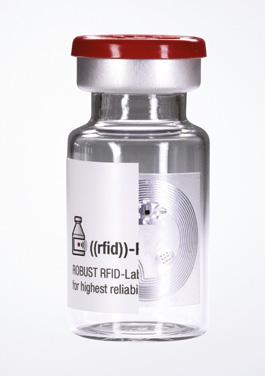
The Innovation Group is always interesting to judge as we are regularly presented with new technology and different applications for the label press output. The winner of the Innovation and Electronic Printing Processes Group was Schreiner Group GmbH & Co. KG, Germany for Robust RFID-Label. It is important that when a RFID chip is used to identify or track a medication it does not get compromised during its useful working life. The Robust RFID Labels features a unique and innovative design. The label-integrated RFID chip is secured by the label’s special construction featuring protective printed elements. This means that potential damage to the RFID chip, for example mechanical impact during the manufacturing and handling processes can be avoided enabling higher production rates and continued functionality during the lifetime of the pharmaceutical product. Digitisation is an emerging trend in healthcare scenarios. A considerable amount of information about a pharmaceutical product can be carried on a single RFID chip for example to enable interactions between the patient and their medical treatment. It is key that the performance and functionality of the chip is not impaired in any way due to damage during its working life. Therefore robustness of the label is the key.
Group E: Digital Printing CABAS for Gerolemo Maratheftiko Sweet
The winner in the Digital Printing Group was CABAS S.A., Greece for Gerolemo –Maratheftiko Sweet. This label was printed digitally in four colours with the addition of dedicated silk screen and gold foil areas revealing design details that will trigger the consumer’s emotive response in the description of the product. The substrate was selected to add a touch of luxury and high added value to the finished result. The substrate used for this label is a recycled paper and is therefore a responsible choice yet giving premium quality. Overall this is a responsible label which tells a story and aims to create a sense of luxury and leave a lasting impression with the consumer even before the cork is removed.

Judges Award
Multi-Color Corporation for Tilde Australian Raw Vodka

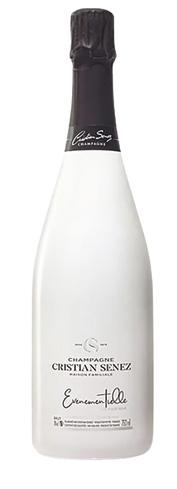
This year, the Judges Award was given to Multi-Color Corporation, Australia for Tilde Australian Raw Vodka. A technical complicated label which is best described by the converter’s own technical explanation. ”Two label substrates were used, a coated poly film on the underside printed in CMYK + Toyo Black up to Unit 4 on the press then a Contone Bianco top substrate which is separated and joined to the poly film bottom stock at unit 5. Printing continues with two greys and Toyo Black with a Highbuild screen and finished with a spot Matt varnish and final die cut. Eventually five colours were used along with a 200 lpi screen.”

LabeLworld | 40 | 2023 Label Story

Birre ed etichette premiate le eccellenze italiane
Sono stati premiati i vincitori dei concorsi dedicati alle eccellenze tecniche e grafiche della birra artigianale di Solobirra, l’area speciale di Hospitality - Il Salone dell’Accoglienza, che si è tenuto a febbraio a Riva del Garda. Quest’anno sono state oltre 300 tra birre, etichette e packaging coordinati ad essersi sfidati nella competizione nata per valorizzare il gusto e la creatività delle birre artigianali.
2° classificato
Birra: Stern | X-Mas Beer | La birra del quartiere
Birrificio: Viertel Group
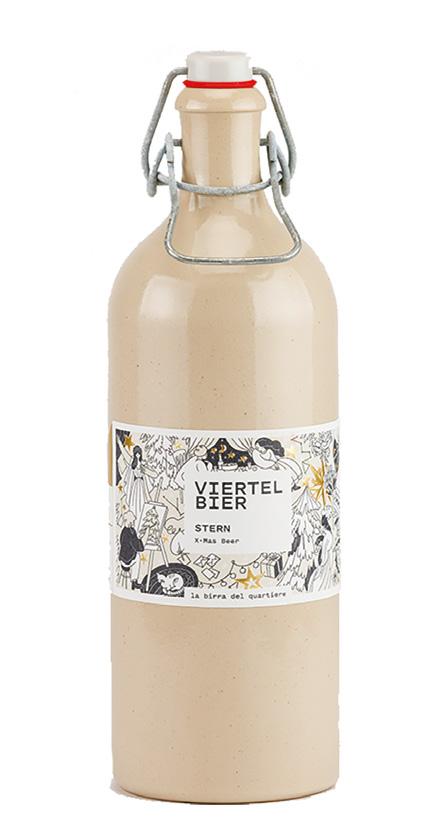
Studio grafico: Frei und Zeit
Stampatore: Litografia Castello
1° classificato
Birra: KAST.A
Birrificio: Birrificio Badalà


Studio grafico: Dario
Frattaruolo Design
Stampatore: La Commerciale
3° classificato
Birra: Breakfast Porter

Birrificio: Birra Artigianale
Impavida
Studio grafico: Creature Theory
Agency
Stampatore: Neri Labels
LabeLworld | 42 | 2023
Label Story
esaminato 243 birre artigianali non filtrate e non pastorizzate decretando i primi tre classificati in 22 categorie. Ad aggiudicarsi il premio Best Beer 2023 come migliore birra per gusto, proprietà organolettiche e materie prime utilizzate è stata 21 12 del Microbirrificio Artigianale Incanto. Le 60 etichette originali che si sono sfidate nel concorso Best Label 2023 sono state giudicate da un gruppo di esperti di marketing, design e comunicazione – Gianpietro Sacchi, Micol Valle, Alice Marchetti e Laura Meni
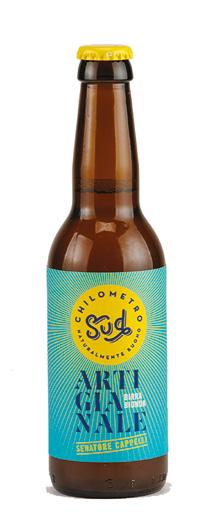
chelli – che, oltre a selezionare le etichette più creative ed efficaci, ha assegnato cinque menzioni speciali nelle categorie Territorial Identity, Illustration, Best Printing, Originality e Inclusivity.
Grande attenzione anche ai packaging brassicoli che si sono sfidati nel concorso Miglior Packaging Coordinato, in cui la giuria ha valutato il miglior progetto che alla creatività unisce le caratteristiche di funzionalità.
Scopriamo, nel dettaglio, i vincitori dei premi Best Label e Miglior Packaging Coordinato 2023.
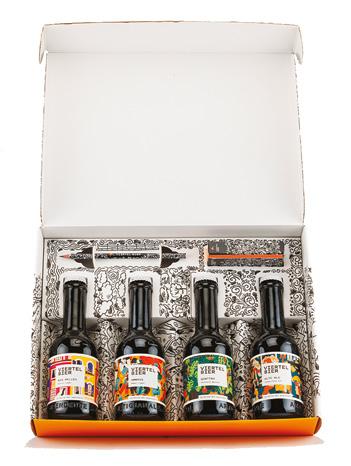
9 Miglior Packaging Coordinato


Birrificio: Viertel Group

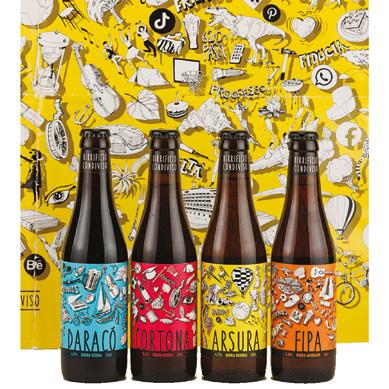

Studio grafico: Arno Dejaco
Stampatore: Cartotrentina
Best LaBeL 2023 LabeLworld | 43 | 2023
Maria Giannico Graphic Designer
Andrea Basile - Illustrazioni Tiago Galo
Dario Frattaruolo Design
4 5 6 8 7 9
European Label Forum label community ready to meet in Vienna
FINAT, the European association for the label industry, has announced the programme for its European Label Forum 2023, to be held from Wednesday 31 May till Friday 2 June at the Hilton Park Vienna. All label industry players are invited to this not-tomiss event.


Each year, the FINAT European Label Forum welcomes the label community to connect in person and to use this occasion to meet, learn, and engage in discussions and dialogue about a range of industry matters. The event is highly rated for its networking possibilities and its knowledge sharing and educational value. This year will be no different with again a top-notch programme, focusing on the socio-economic, geopolitical and packaging landscape, new technologies, sustainability, and supply chain management.
Label industry perspectives
Various speakers will provide insights to how the current geopolitical tensions and financial and economic shocks affect the label business’ future, how to invest in times of disruptions and will present labels and packaging industry perspectives. The
programme will also include various panel discussions to give the audience a wider European packaging perspective.
Sustainability on the agenda
The remaining hot topic is of course sustainability and therefore, it is again a big part of this year’s programme. Topics to be covered are packaging trends, design for recycling, linerless labels and brand owners who will provide their views on sustainability issues. The European Label Forum gives participants the opportunity to talk about circular economy with their stakeholders to optimize collaboration further.
Supply chain workshop
More interactivity is expected during the supply chain workshop. During this programme item, key supply chain challenges in the label value chain will be identified and tackled by working on possible common solutions.
Where the label industry meets
Hosted annually by FINAT, the European Label Forum (ELF) offers a unique source of net-
working, knowledge and experience key to the strategic success of small to mid-sized label businesses. Professionals from several management levels come together to meet up, discuss and get inspired on relevant topics and developments in the label industry. Next to the networking, the European Label Forum offers a top-notch live programme. Around 350 delegates joined us last year in June in Baveno, Italy. “The FINAT ELF is one of the unique chances to feel the printing industry’s pulse and meet inspiring people from various countries” says Matthias Vollherbst, CEO VollherbstDruck GmbH.
According to Francesc Egea, CEO IPE, Etiquetas & Sleeves: “By attending the ELF, we are aware of the latest European label industry trends, products and solutions that are or will be critical in our next future environment. It’s very interesting information in a very short period of time, such a good investment!”
“FINAT provides the chance to meet key industry stakeholders and share ongoing trends so we can understand them better” declares Ales Krmela, Marketing & Sales Manager Delfort Group.
LabeLworld | 44 | 2023 Events
Labelexpo Europe la stampa di etichette torna protagonista
Dopo 4 anni ritorna Labelexpo Europe, l’appuntamento di riferimento a livello mondiale per il mondo della stampa di etichette. Tarsus Group, organizzatore della Labelexpo Global Series, ha annunciato l’apertura delle iscrizioni all’edizione in programma dall’11 al 14 settembre a Bruxelles.
4
giorni di apertura, 9 padiglioni occupati e oltre 600 espositori iscritti: sono questi alcuni dei numeri di Labelexpo Europe 2023. La fiera più attesa dal settore della stampa di etichette ritorna finalmente in presenza dopo l’ultima edizione tenutasi nel 2019. Dall’11 al 14 settembre il centro espositivo di Bruxelles ospiterà le più recenti tecnologie e attrezzature per la stampa e la trasformazione, oltre a masterclass sull’etichettatura del vino e su packaging ed etichette sostenibili ed eventi speciali incentrati sull’automazione e l’imballaggio flessibile.

Un settore in continua evoluzione
Il settore della stampa di etichette sta vivendo un incredibile processo di trasformazione e di rapida innovazione per far fronte alle abitudini e alle esigenze dei clienti nell’era post-pandemica. Labelexpo Europe 2023 sarà una vetrina tecnologica di dimensioni straordinarie che darà ai visitatori la possibilità di osservare nuovi macchinari in azione, dal vivo, e scoprire tutti i segreti dell’eccellenza nella stampa. La fiera chiama a raccolta i grandi nomi della stampa di etichette per un evento di settore che

detta da sempre gli standard in tutto il mondo. Hanno già confermato la loro presenza oltre 600 tra i fornitori di maggior successo a livello globale. Partecipando all’evento i visitatori avranno la possibilità di fare rete con i protagonisti del settore, parlare delle ultimissime tendenze, confrontare idee e scambiare informazioni preziose con le persone che stanno plasmando il futuro nel settore della stampa di etichette e imballaggi.
Un’offerta ampia e variegata
Sono tante e diverse le attrezzature, le tecnologie e le soluzioni che saranno esposte in fiera e che i visitaotri potranno vedere in azione in diretta o toccare con mano: macchine per stampa digitali e convenzionali, materiali per etichette e imballaggi di alta tecnologia, tecnologia di prestampa e lastre, sistemi di finishing e converting. attrezzature per ispezione, sovrastampa e applicazione di etichette, fustellatrici, taglierine e rulli, inchiostri e rivestimenti, soluzioni di sicurezza e RFID, software e tecnologie interattive.
Registrazioni online aperte
Gli organizzatori hanno annunciato a fine aprile l’apertura delle registrazio-
ni online, con possibilità di acquistare i biglietti a tariffa scontata fino al 25 agosto alle 18.00 CET. Jade Grace, portfolio director di Labelexpo Global Series, ha commentato: “Siamo lieti di ospitare nuovamente Labelexpo Europe e possiamo promettere ai visitatori uno spettacolo straordinario in nove padiglioni. Vedremo un’esplosione di tecnologia all’avanguardia lanciata in fiera, dalla prestampa ai materiali, alla stampa digitale e convenzionale e alla tecnologia di conversione. Aggiungete a questo una serie di eventi educativi leader a livello mondiale e la nostra attenzione all’automazione e all’imballaggio flessibile per i trasformatori di etichette e avrete un’esperienza imperdibile a Labelexpo”. Ha aggiunto Andy Thomas-Emans, direttore strategico di Labelexpo Global Series, “Stiamo già assistendo all’emergere di temi tecnologici chiave a Labelexpo Europe 2023. Diversificazione tra etichette e tecnologie di imballaggio flessibile, abbellimento digitale, flusso di lavoro e automazione delle macchine, raccolta di dati in tempo reale nel corso Cloud e sostenibilità su più fronti, dai LED-UV alle nuove scelte di materiali e adesivi. Questo sarà uno spettacolo di riferimento per la direzione futura del nostro settore”.
evenTs
Per info e registrazioni: www.labelexpo-europe.com LabeLworld | 45 | 2023
Vienna
31 maggio – 2 giugno
Forum degli etichettifici europei www.europeanlabelforum.com
Milano –Rho
5-8 settembre
Mostra internazionale dell’industria delle materie plastiche www.plastonline.org

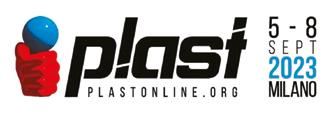
Parma 24-27 ottobre
Salone internazionale di tecnologie alimentare www.cibustec.it
Algeri 5-8 giugno
Salone della filiera agroalimentare en.djazagro.com

Bruxelles 11-14 settembre
Fiera delle tecnologia di stampa di etichette e imballaggi www.labelexpo-europe.com


Rimini 7-10 novembre
Evento per la transizione ecologica e l’economia circolare www.ecomondo.com

Lazise (Verona) 15-16 giugno
Convegno degli etichettifici italiani www.gipea.net
Monte Carlo 2-4 ottobre
Salone internazionale del packaging di lusso www.luxepackmonaco.com
Norimberga 28-20 novembre
Fiera internazionale dei beni strumentali per l’industria delle bevande www.braubeviale.com


Colonia 19-23 marzo
Fiera per l’industria alimentare e delle bevande www.anugafoodtec.com

Dusseldorf
28 maggio – 7 giugno
Fiera internazionale per l’industria della stampa www.drupa.com

Chicago 10-12 settembre
Evento per la stampa delle etichette e del packaging

www.labelexpo-americas.com
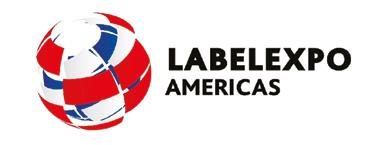
LabeLworld | 46 | 2023 Agenda 2023 2024 2024
Agenda

Abbiamo parlato di...
ALL4LABELS ITALY pag. 16, 37
VIA CAMPANIA 43
36015 SCHIO VI
www.all4labels.it
BAMA NOW pag. 15, 30
VIA MORIGI 2/A
20123 MILANO MI
Tel. 0284925581 - Fax 0284925582
www.bamagroup.com
BOBST FIRENZE pag. 29
VIA FRATELLI CERVI 76
50013 CAMPI BISENZIO FI
Tel. 0552374745 - Fax 0552020019
www.bobst.com
CANON ITALIA pag. 1, 18
STRADA PADANA SUPERIORE B 2
20263 CERNUSCO SUL NAVIGLIO MI
Tel. 0282481 - Fax 02824600
www.canon.it
DURST GROUP pag. 3, 22
JULIUS-DURST-STRASSE 4
39042 BRESSANONE BZ
Tel. 0472810111
www.durst-group.com
FINAT
PO BOX 85612
THE HAGUE
pag. 38, pag. 44
Tel. 0031703123910 - Fax 0031703636348
www.finat.com
FUJIFILM ITALIA pag. 11, 26
STRADA STATALE 11 PADANA SUPERIORE 2/B
20063 CERNUSCO SUL NAVIGLIO MI
Tel. 02929741 - Fax 0292974595
www.fujifilm.eu/it
GEW (EC) pag. 9, 32
CROMPTON WAY CRAWLEY
WEST SUSSEX RH10 9QR
Tel. 00441737824500
Fax 00441737823822
www.gewuv.com
HEIDELBERG ITALIA pag. 20, IV COP
VIA TRENTO 61
20021 OSPIATE DI BOLLATE MI
Tel. 0235003500
Fax 0235003204
www.heidelberg.com
MESSE DÜSSELDORF pag. 8
POSTFACH 10 10 06
DÜSSELDORF

Tel. 0049211456001
Fax 004921145668
www.messe-duesseldorf.de
OMET pag. 13, 24
VIA CADUTI A FOSSOLI 22
23900 MOLTENO LC
Tel. 0341367513
Fax 0341284466
www.omet.it
REM pag. 28
PIAZZA DEL POPOLO 2
20010 ARLUNO MI
Tel. 02 9013828
www.remsrl.eu
SPRINT24 pag. 41
VIA DELLA MERCEDE 11
00187 ROMA RM
Tel. 065411332
Fax 065411307
www.sprint24.com
TARSUS GROUP II COP, pag. 45
2 CHALK HILL ROAD
W6 8DW LONDON
Tel. 00442088462731
Fax 00442088462801
www.tarsus-group.com
UPM RAFLATAC pag. 12
31 TRESOMANKATU – P.O. BOX 53
33101 TAMPERE
Tel. 0035820416143
Fax 00358204168037
www.upmraflatac.com


















































































































